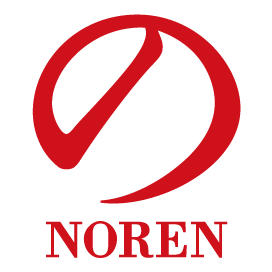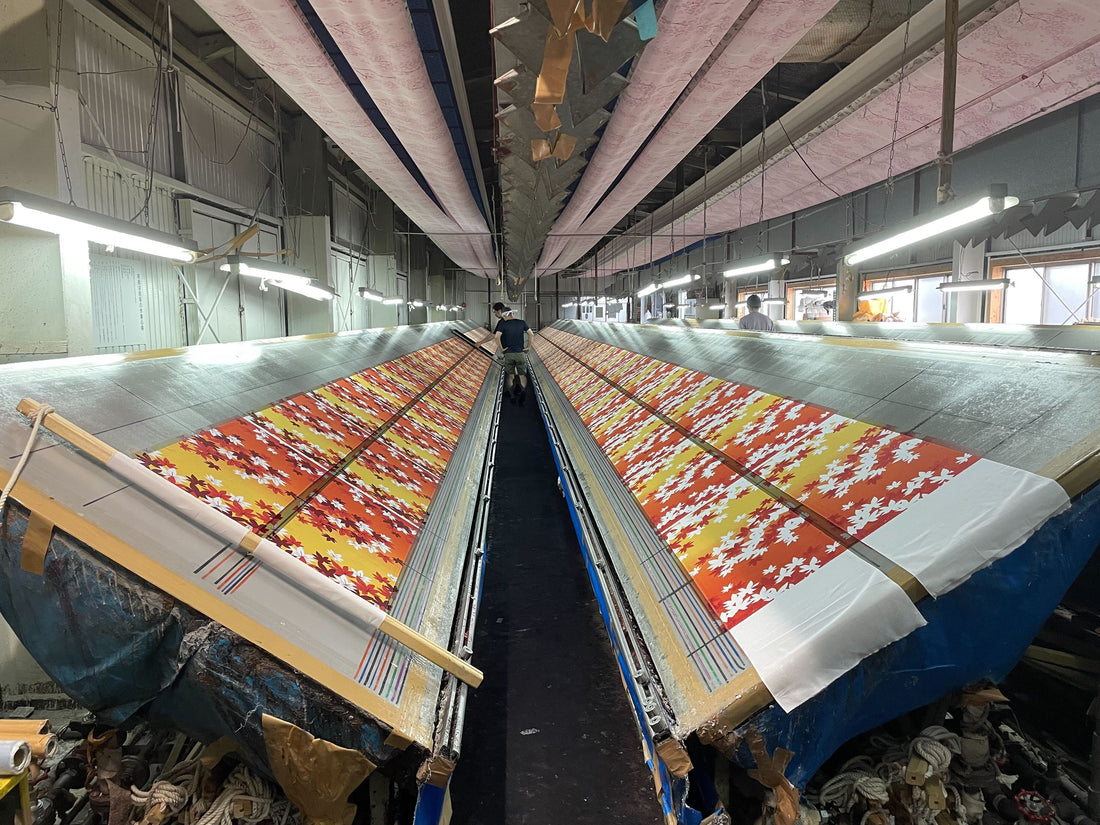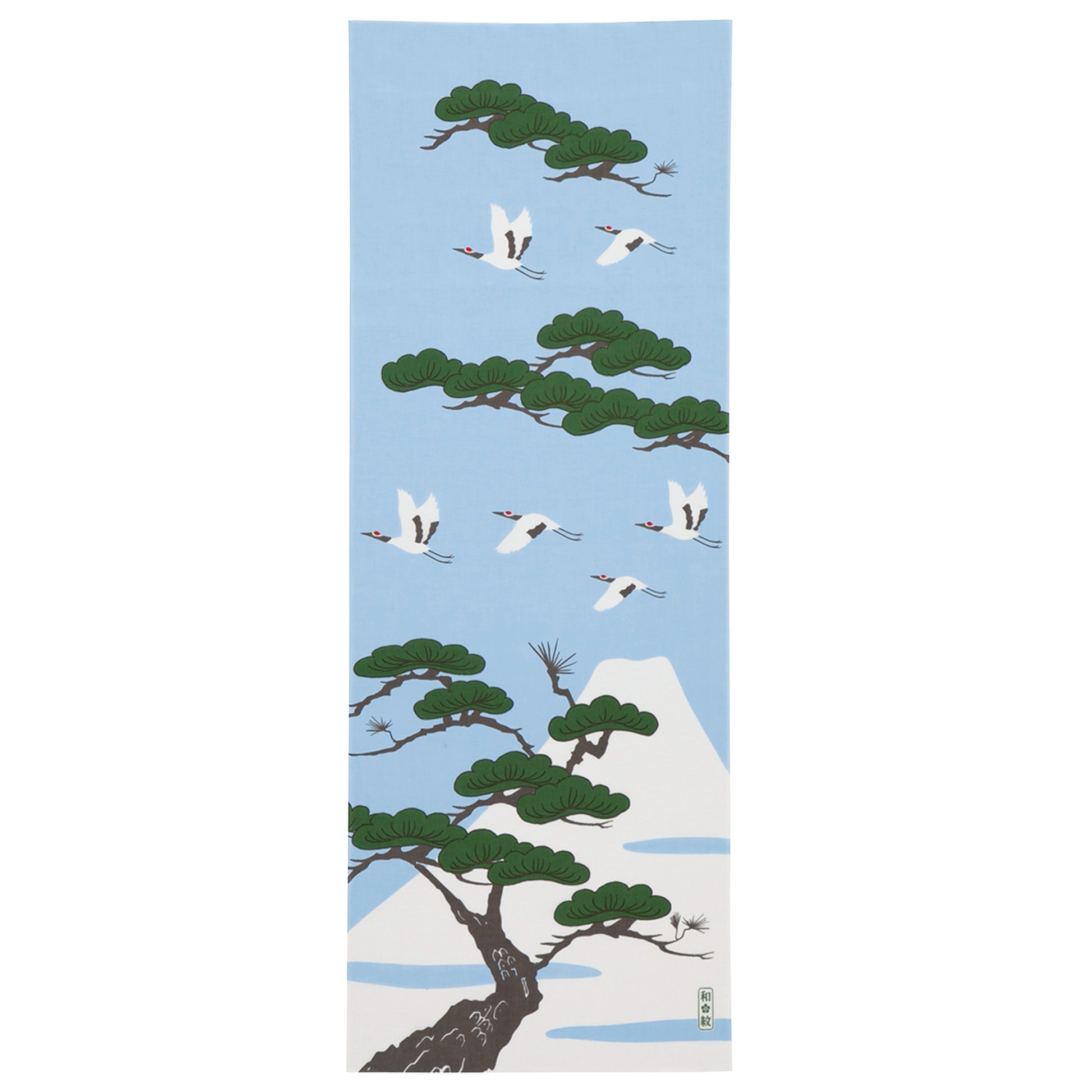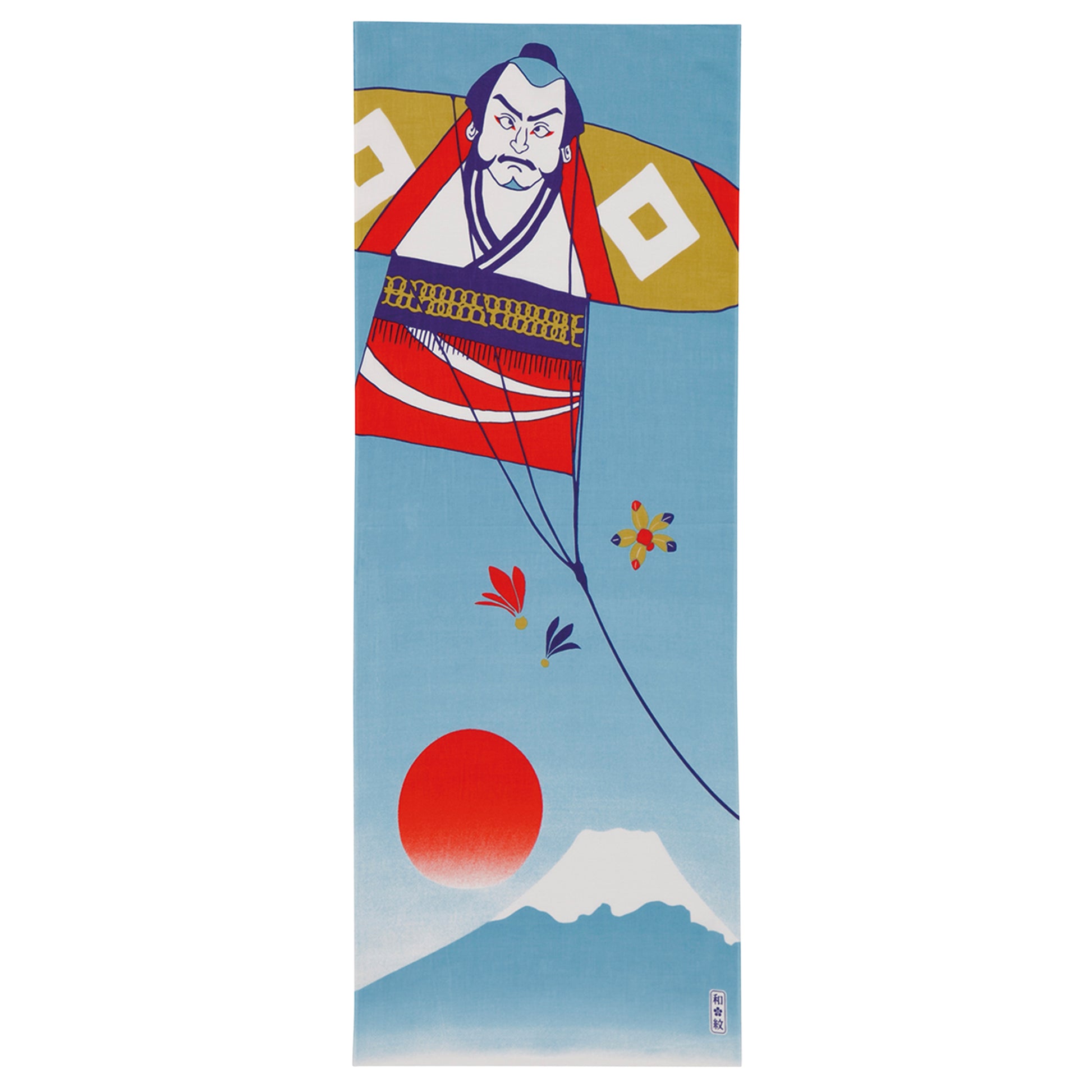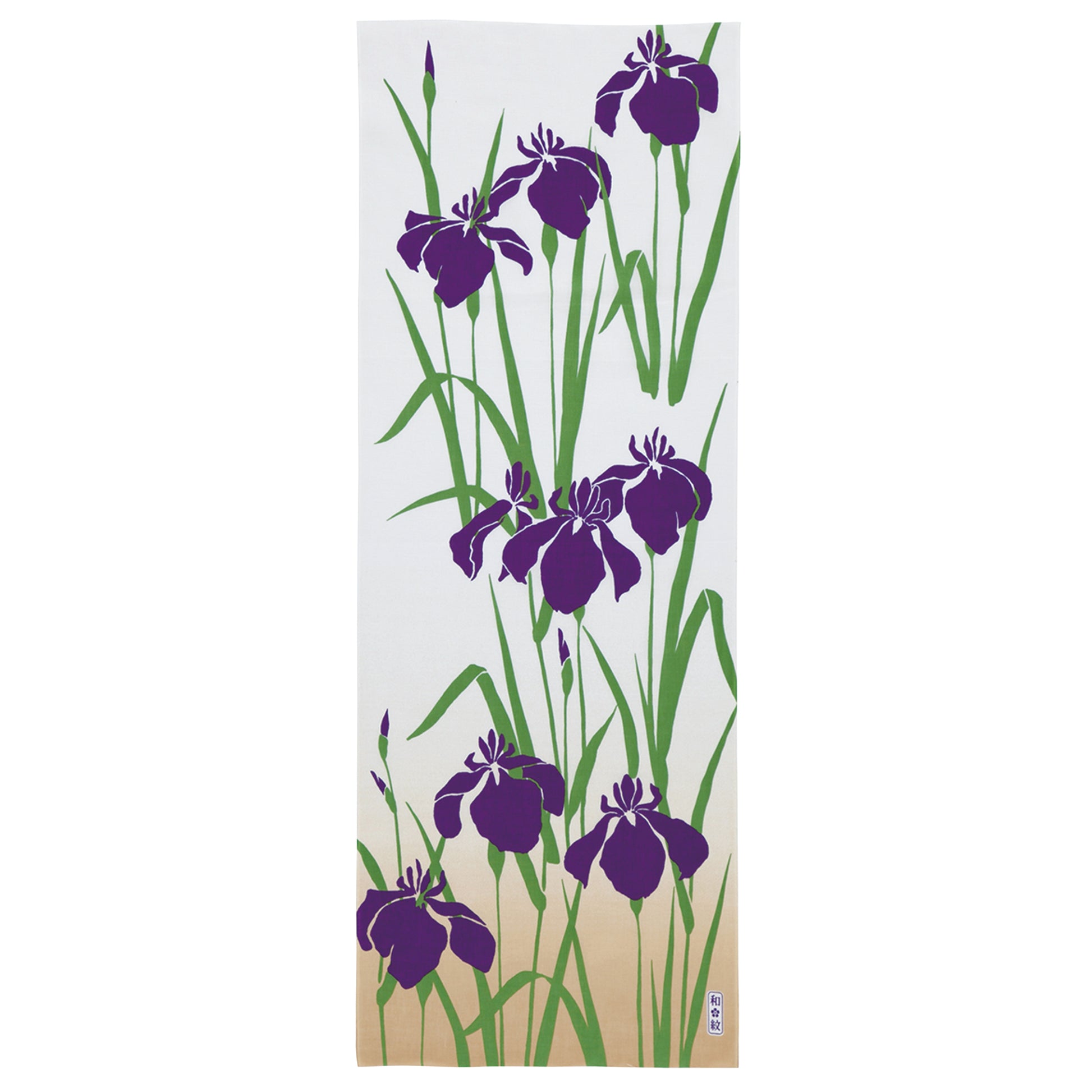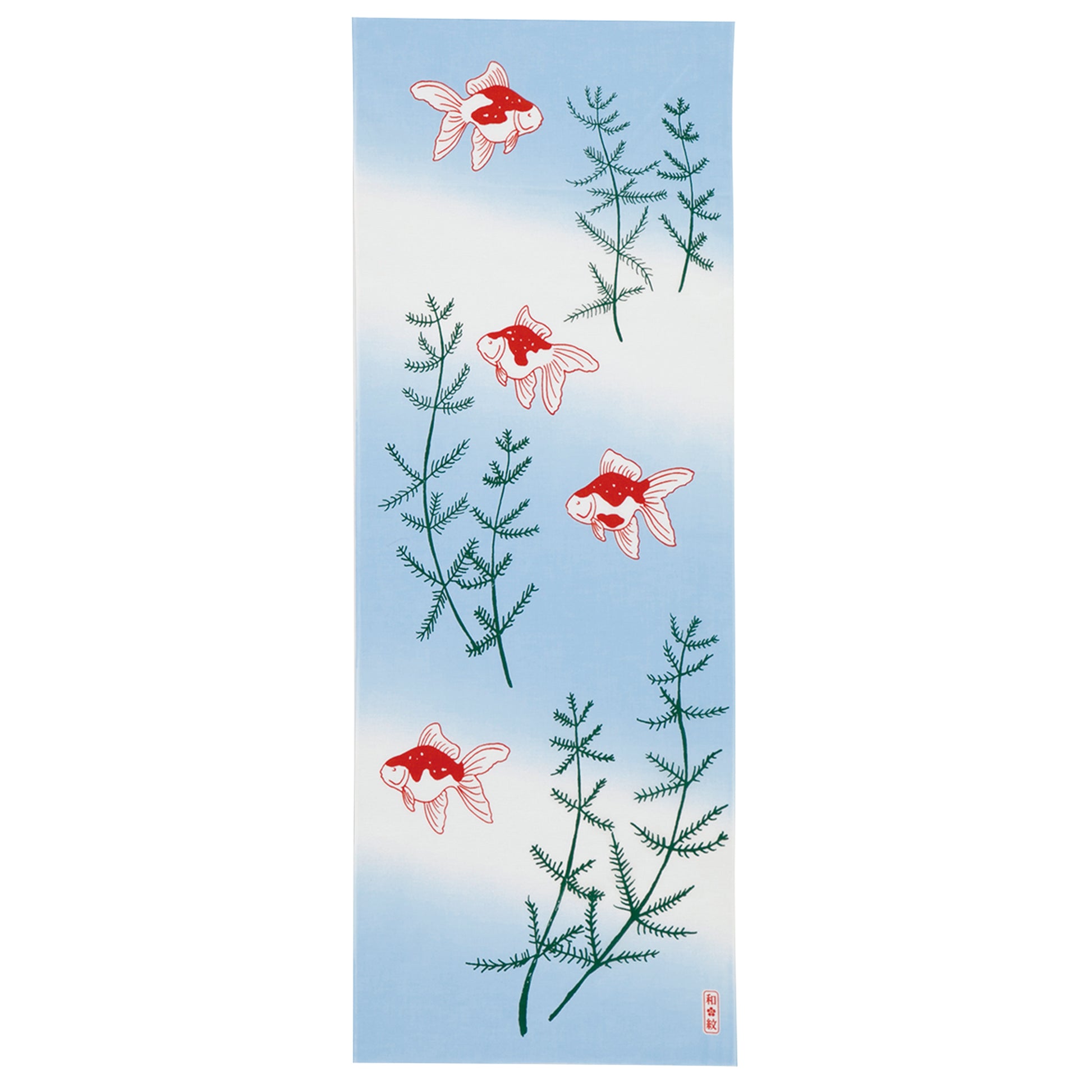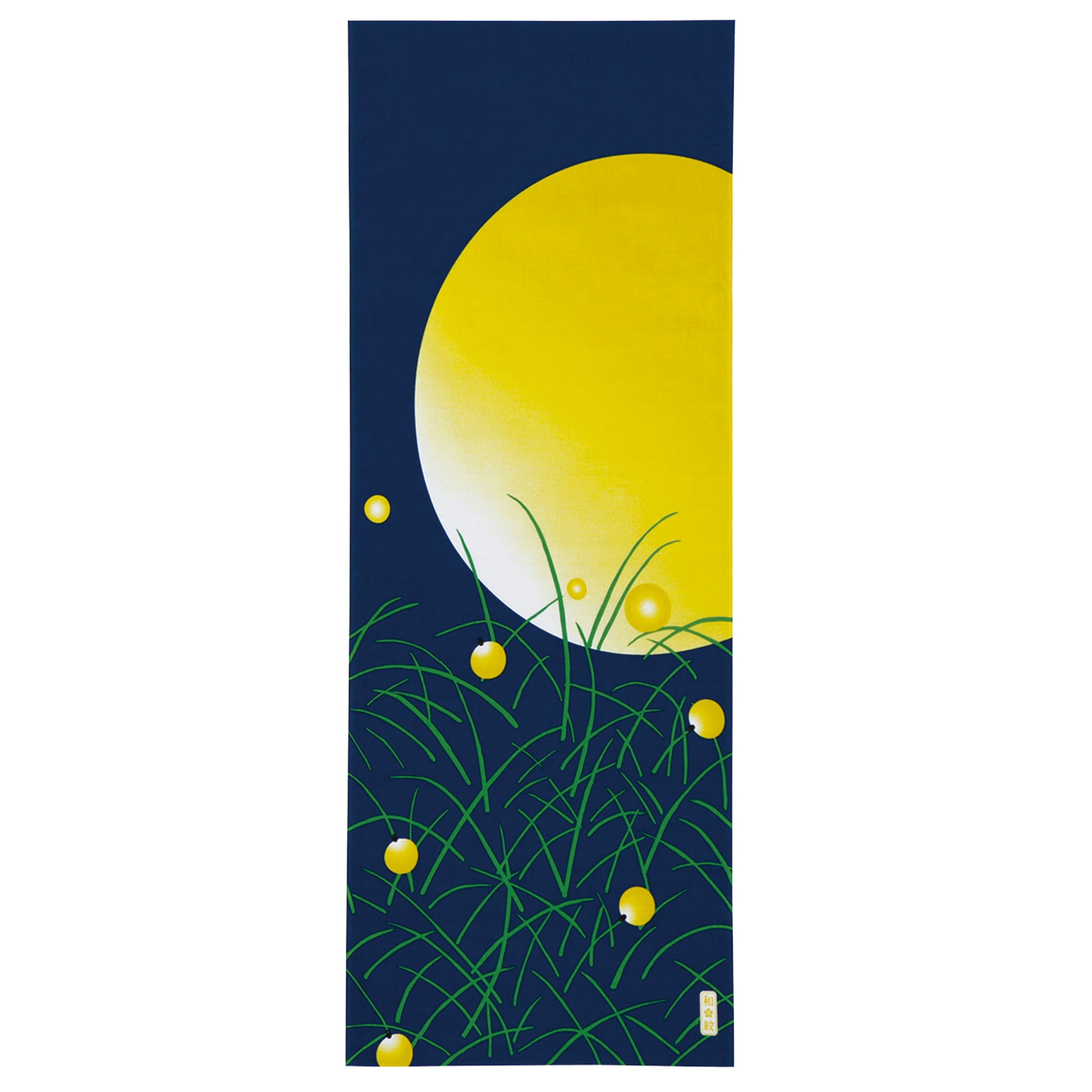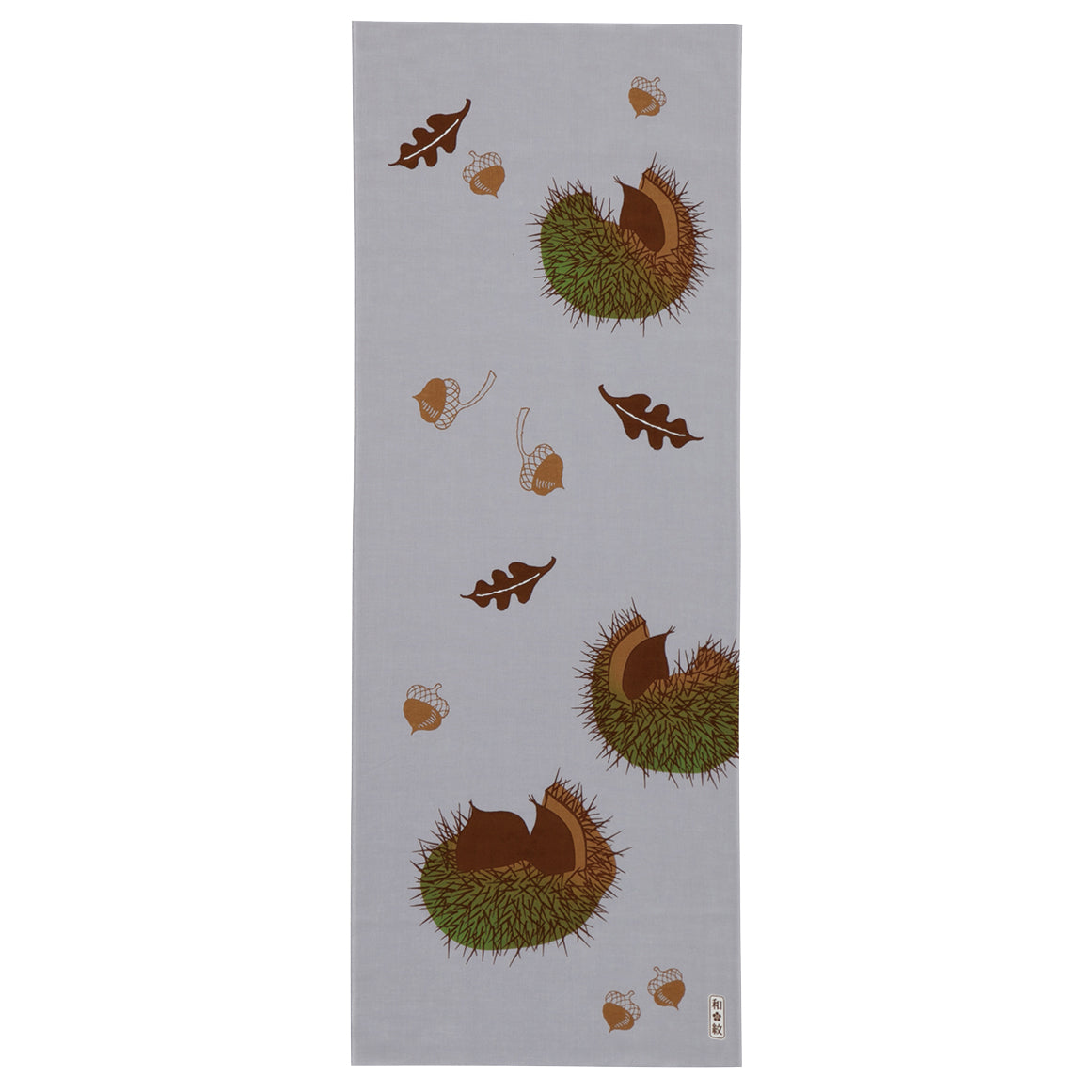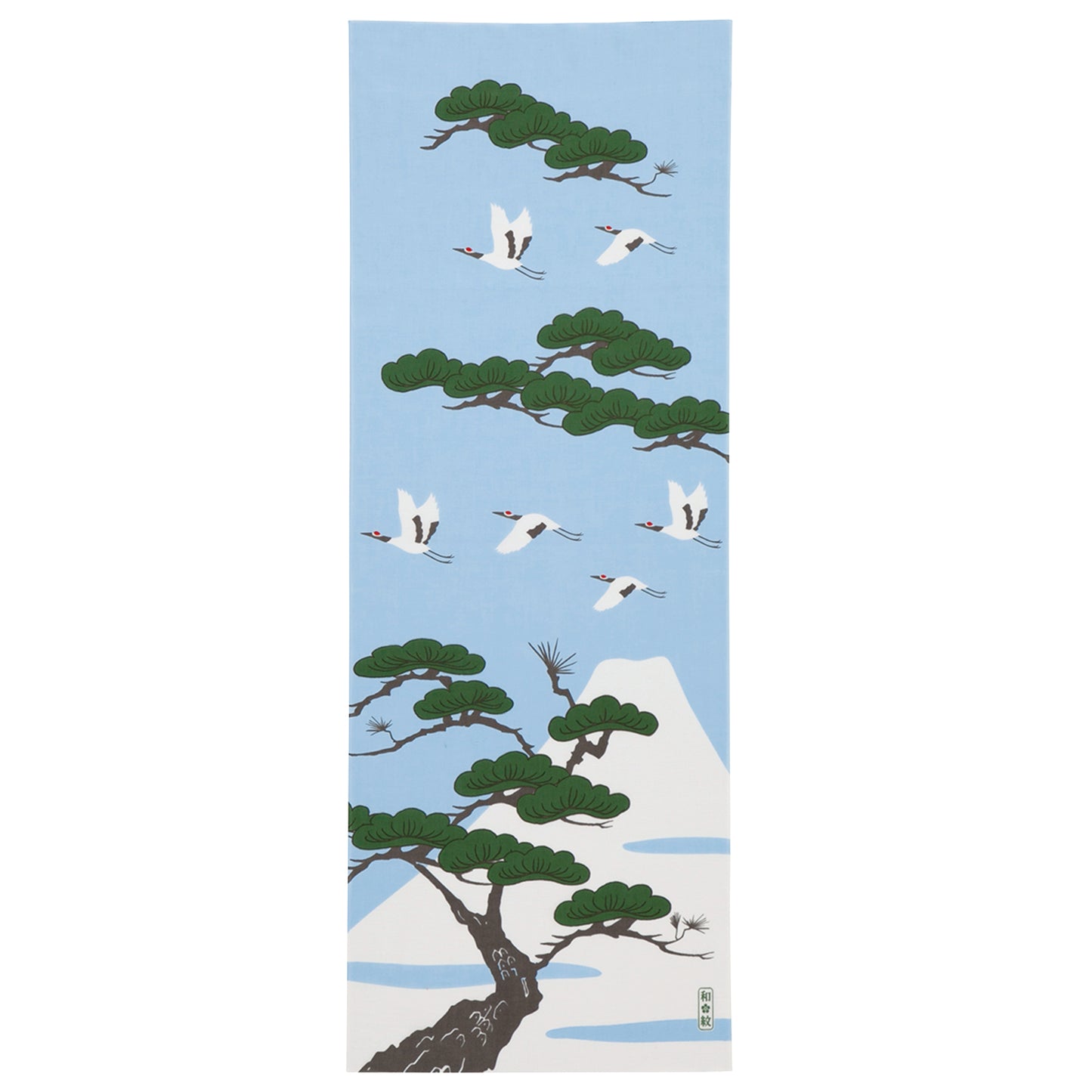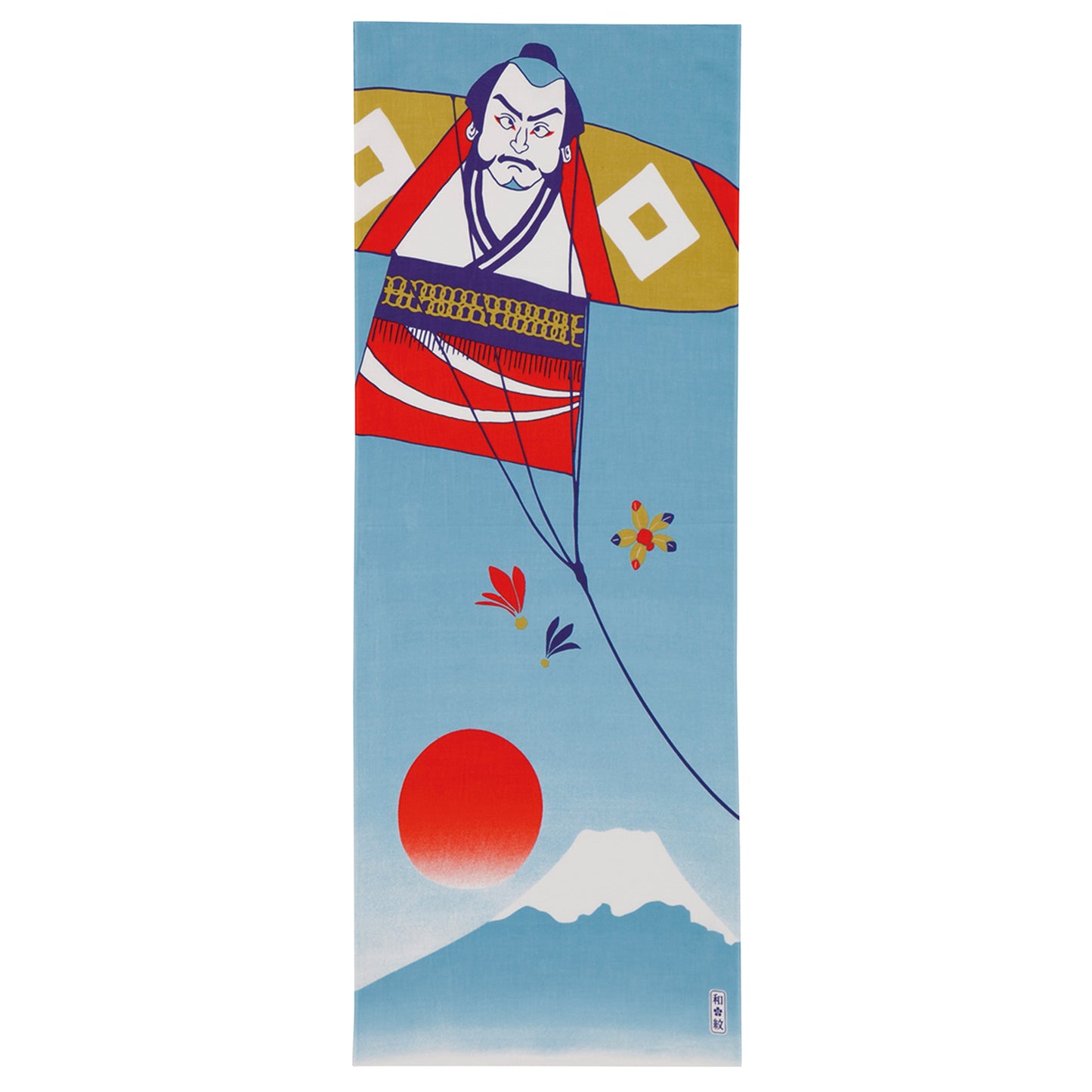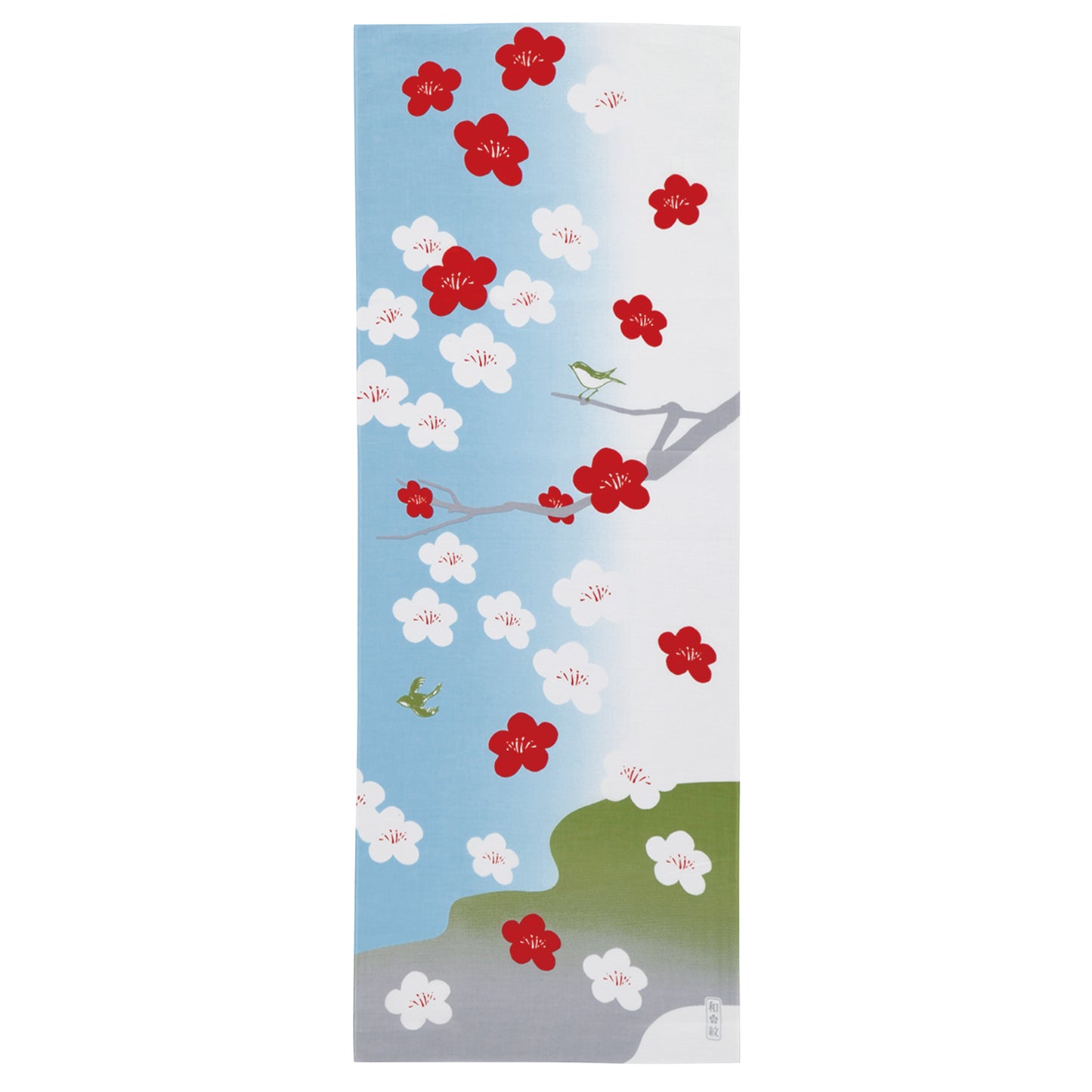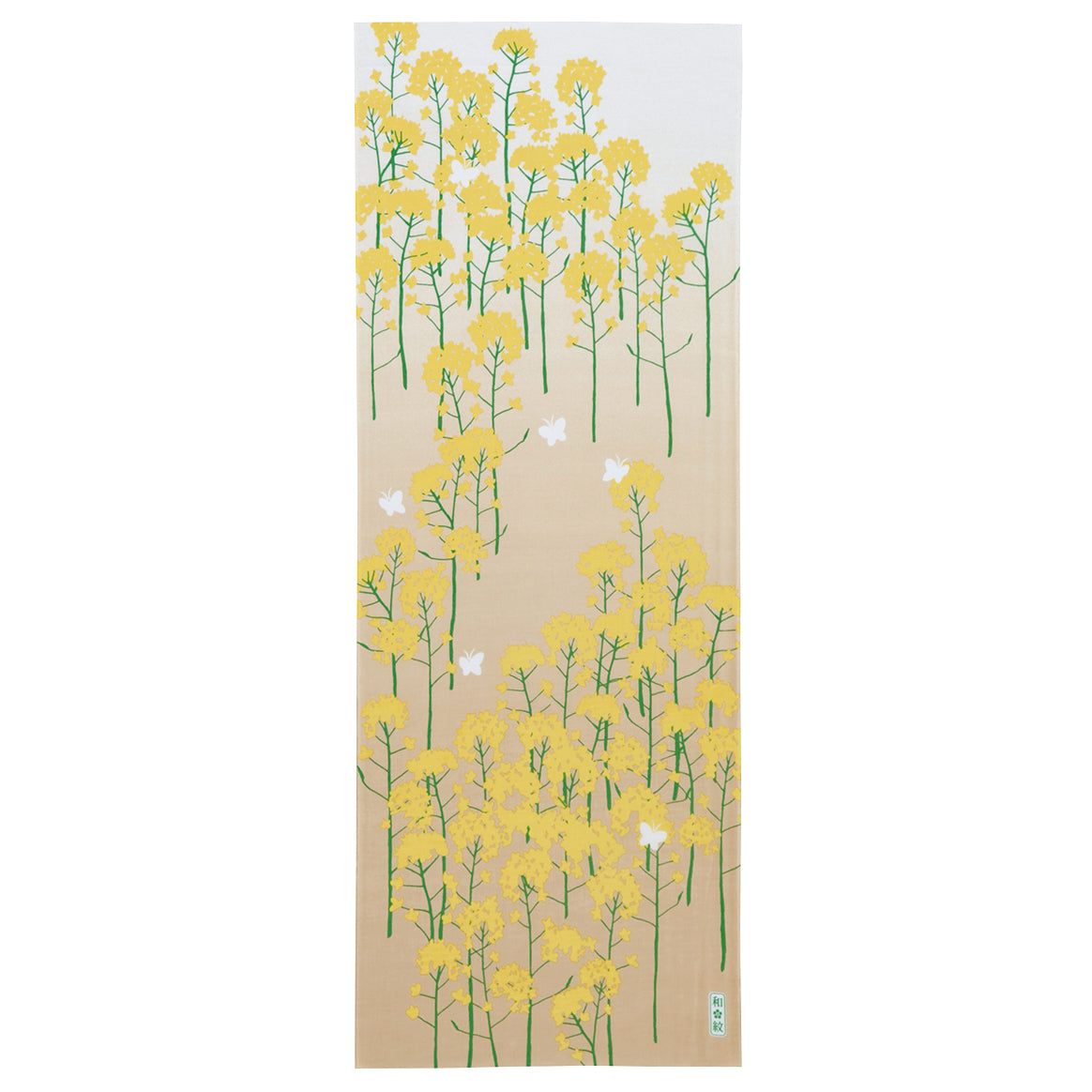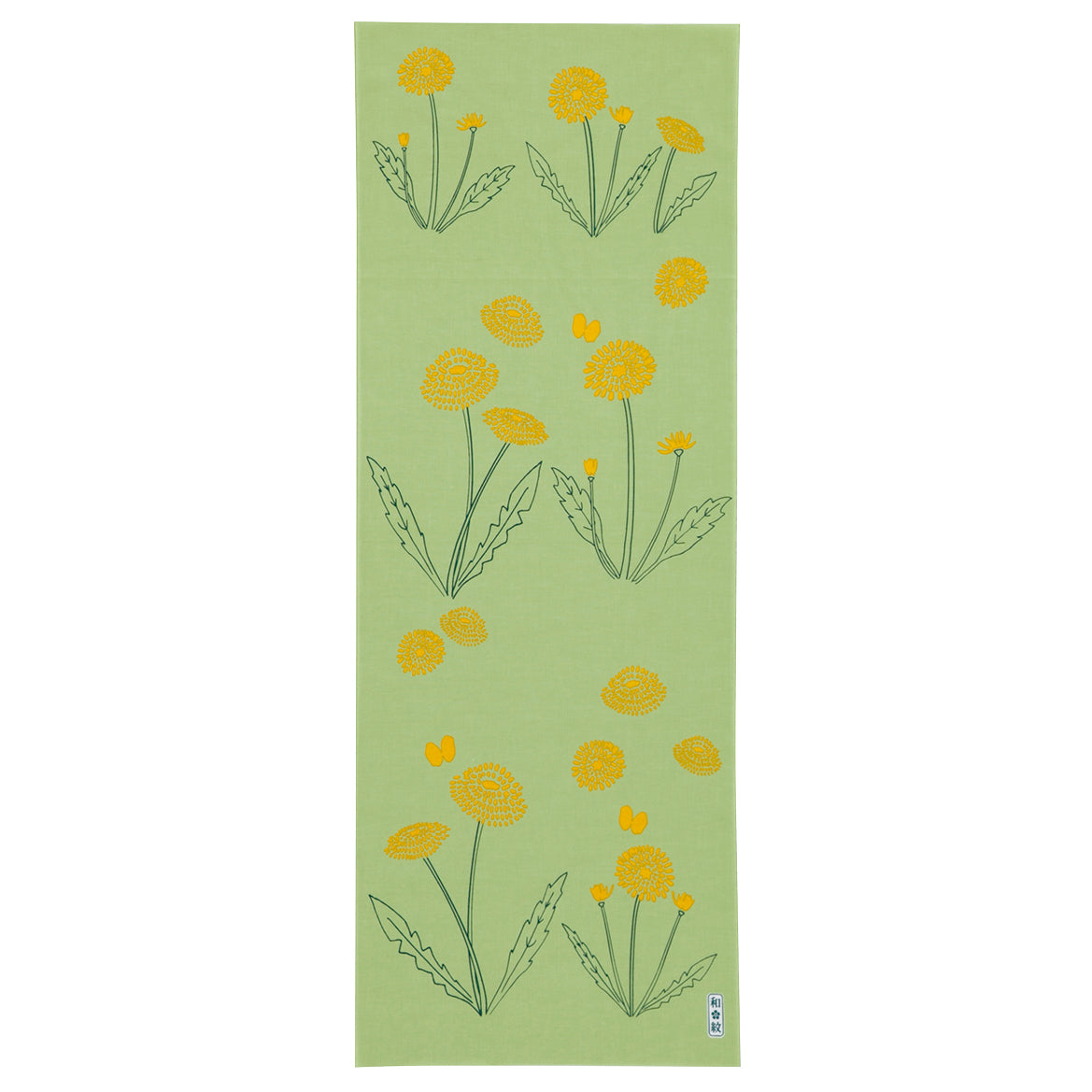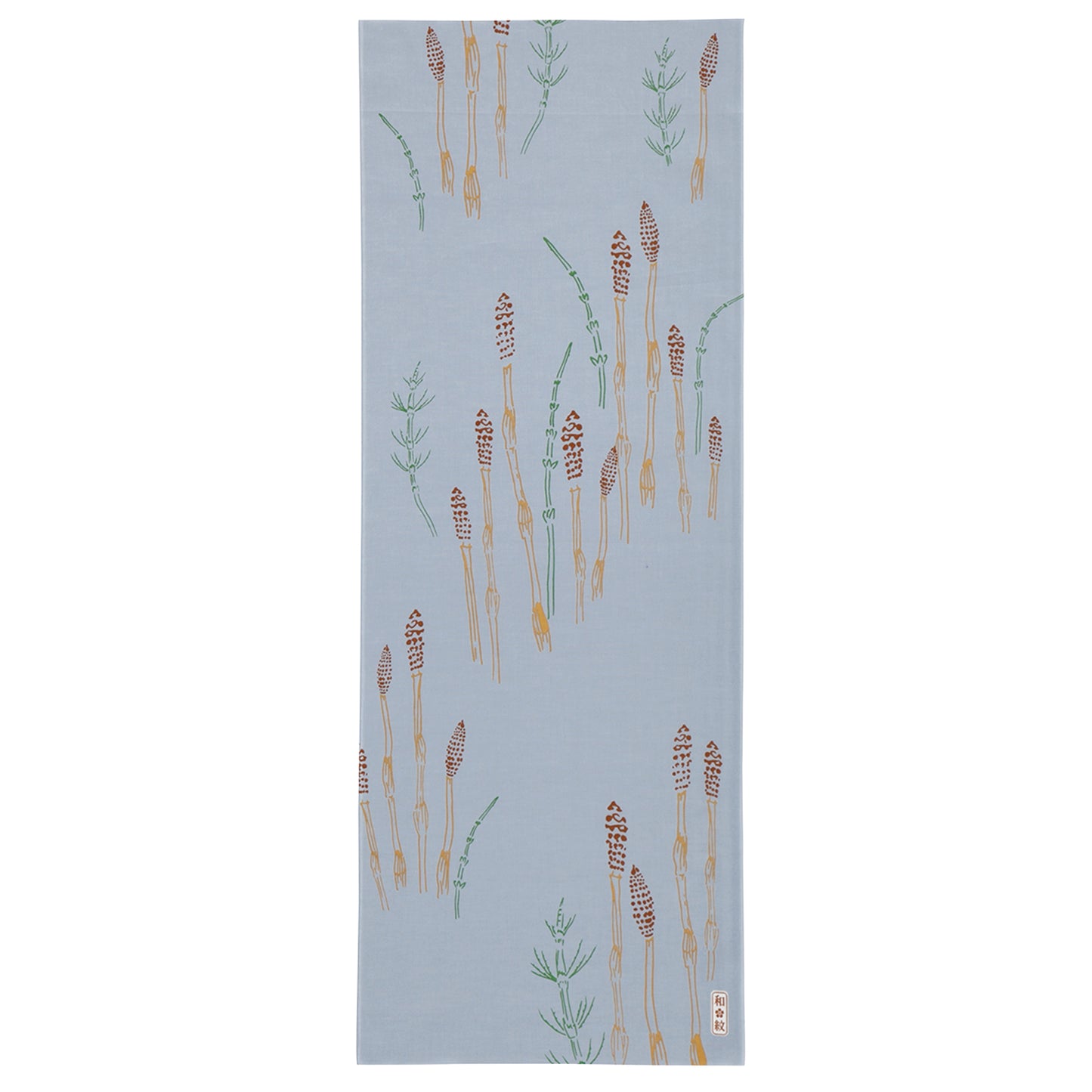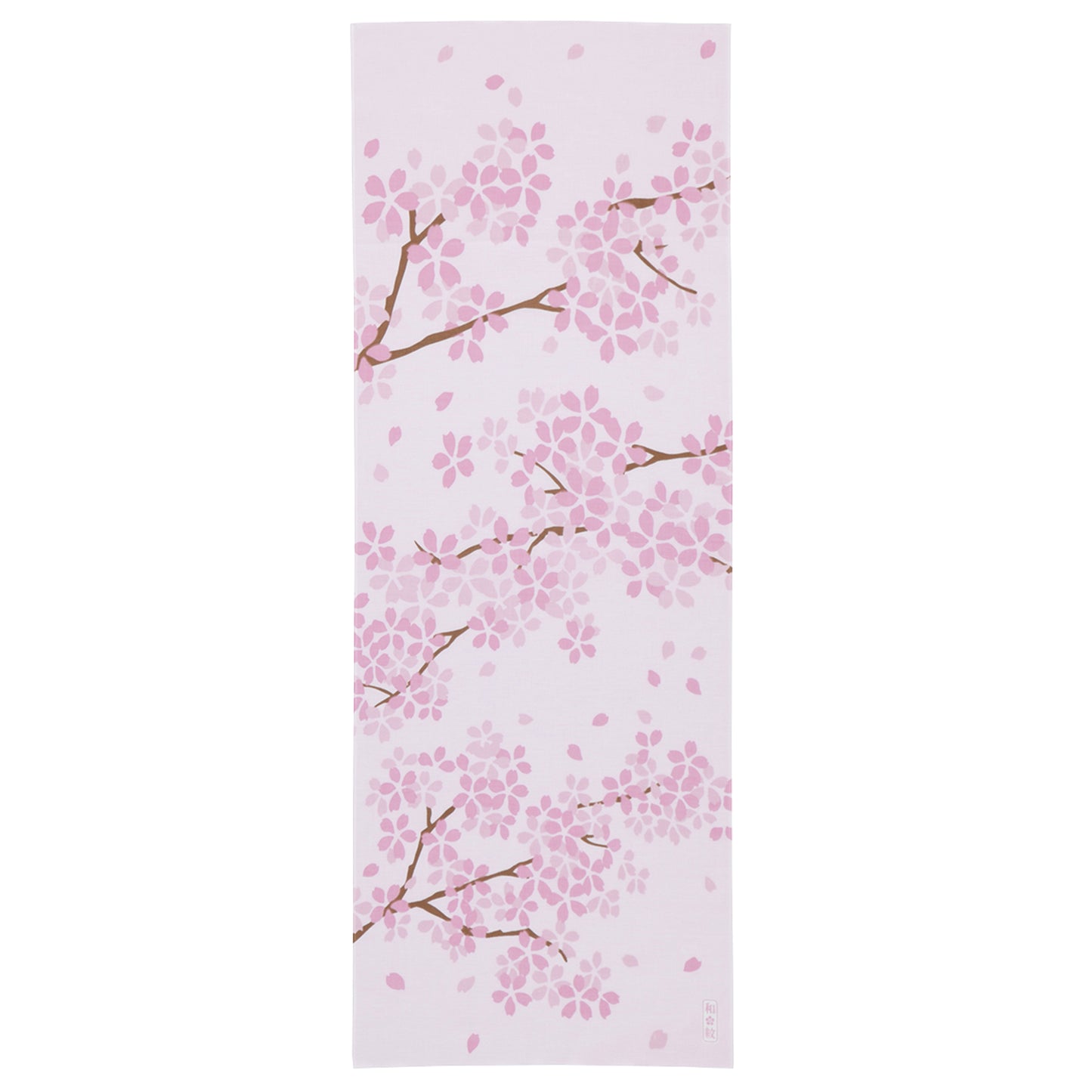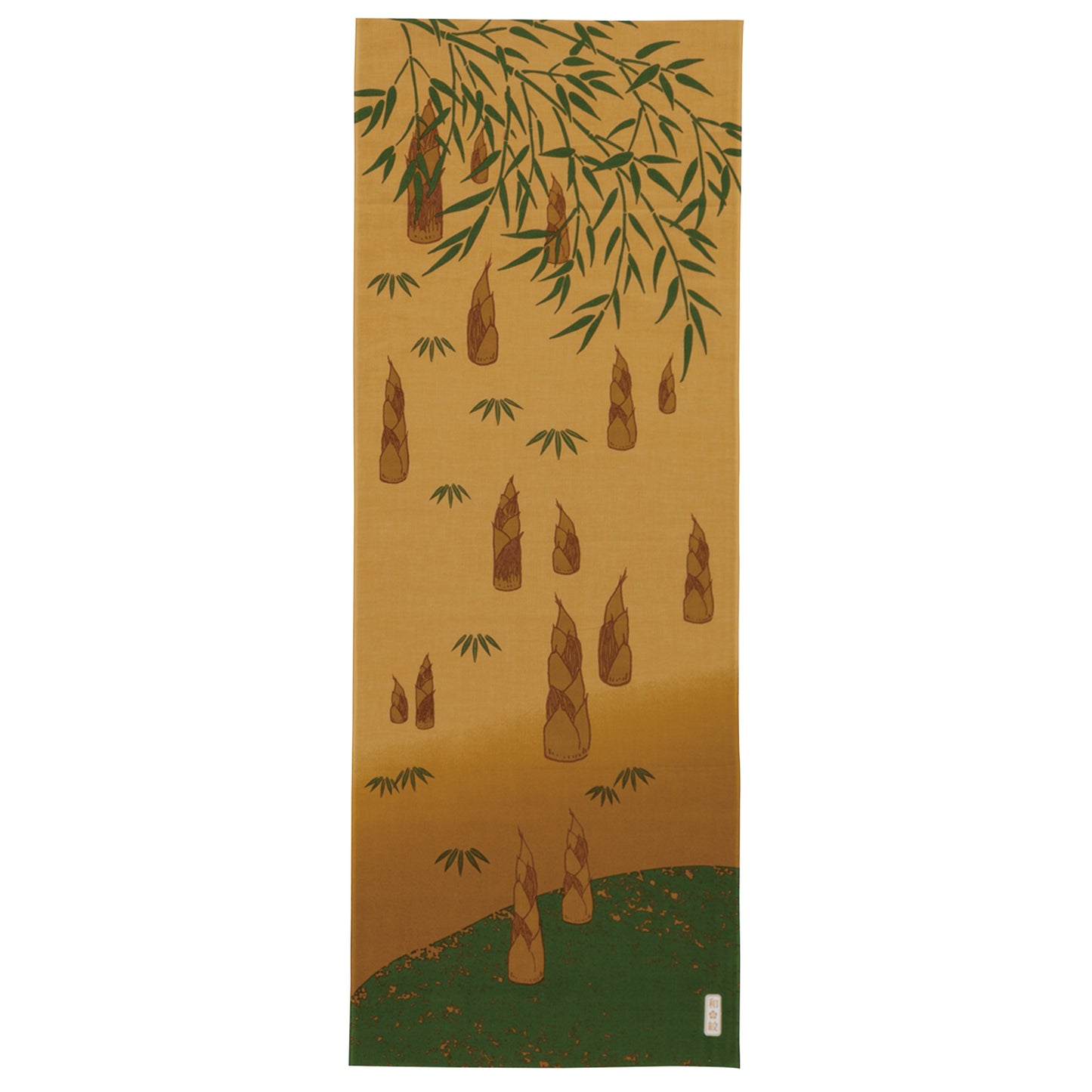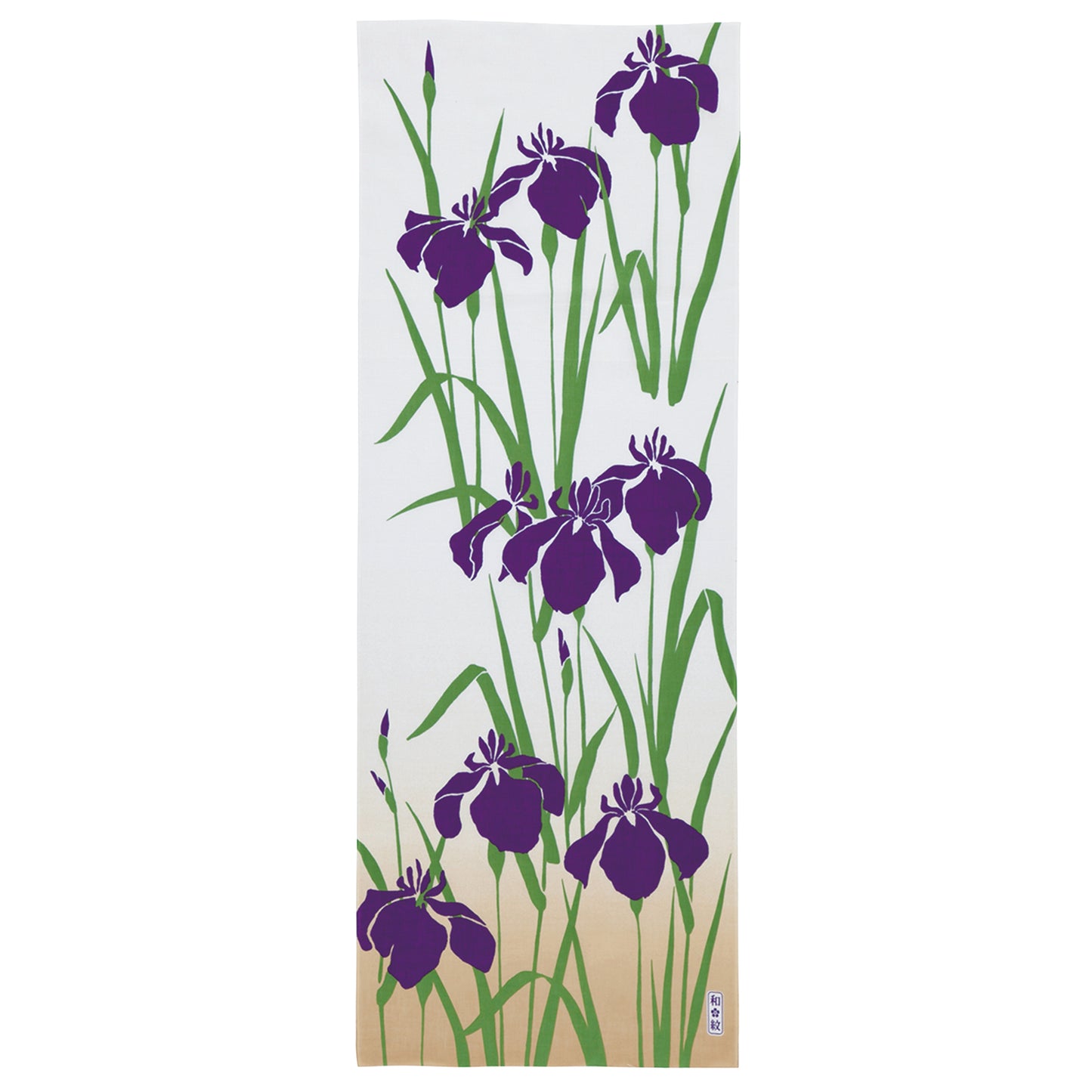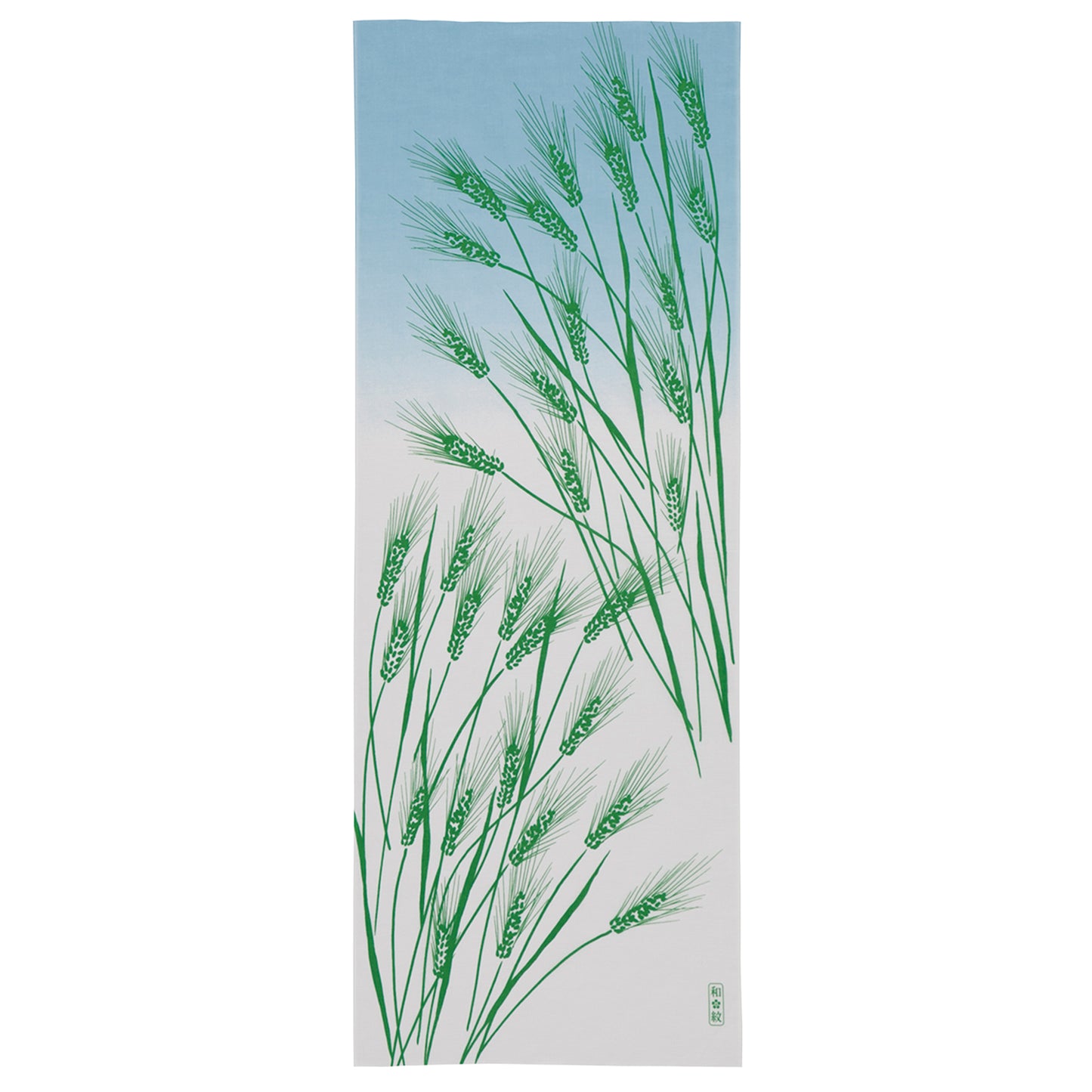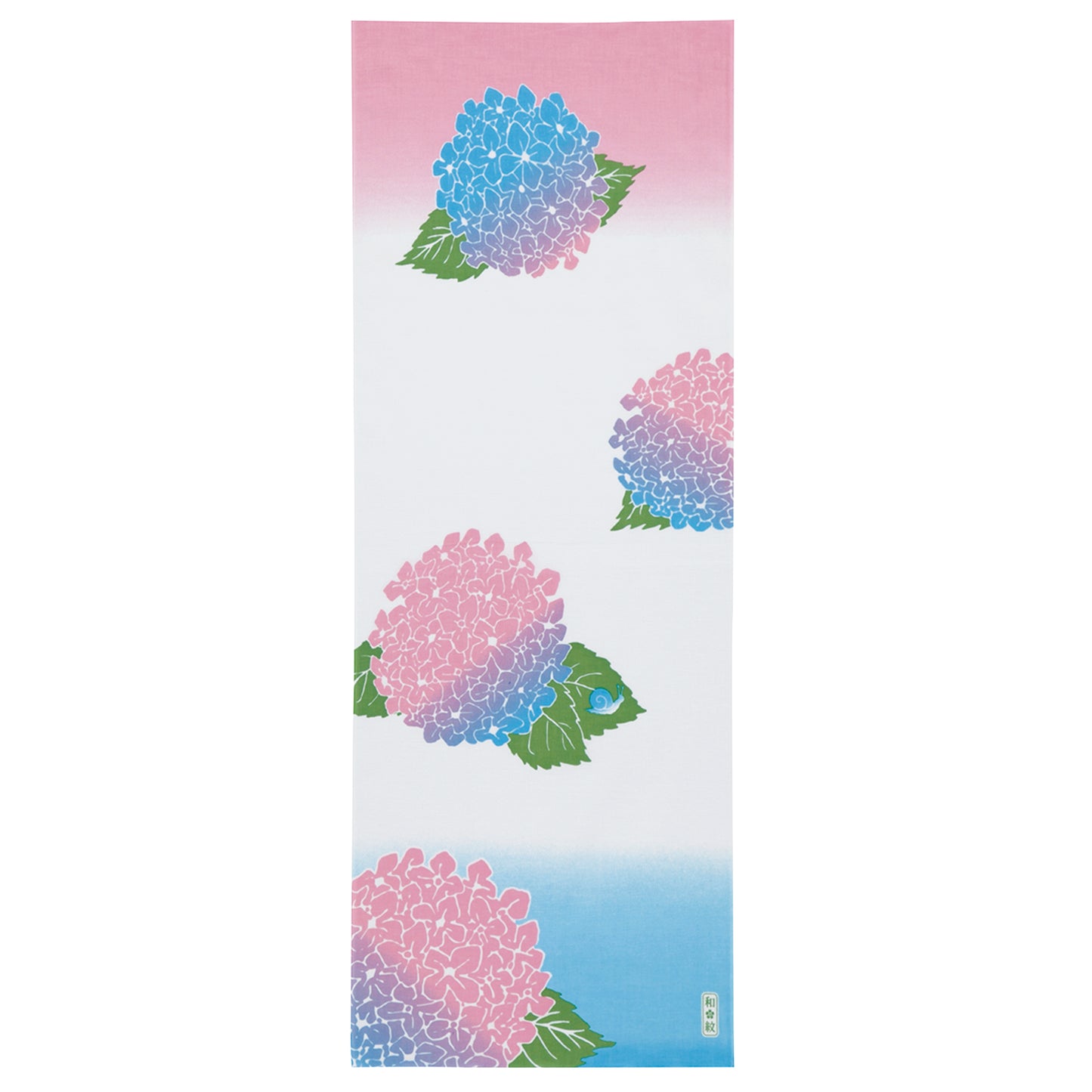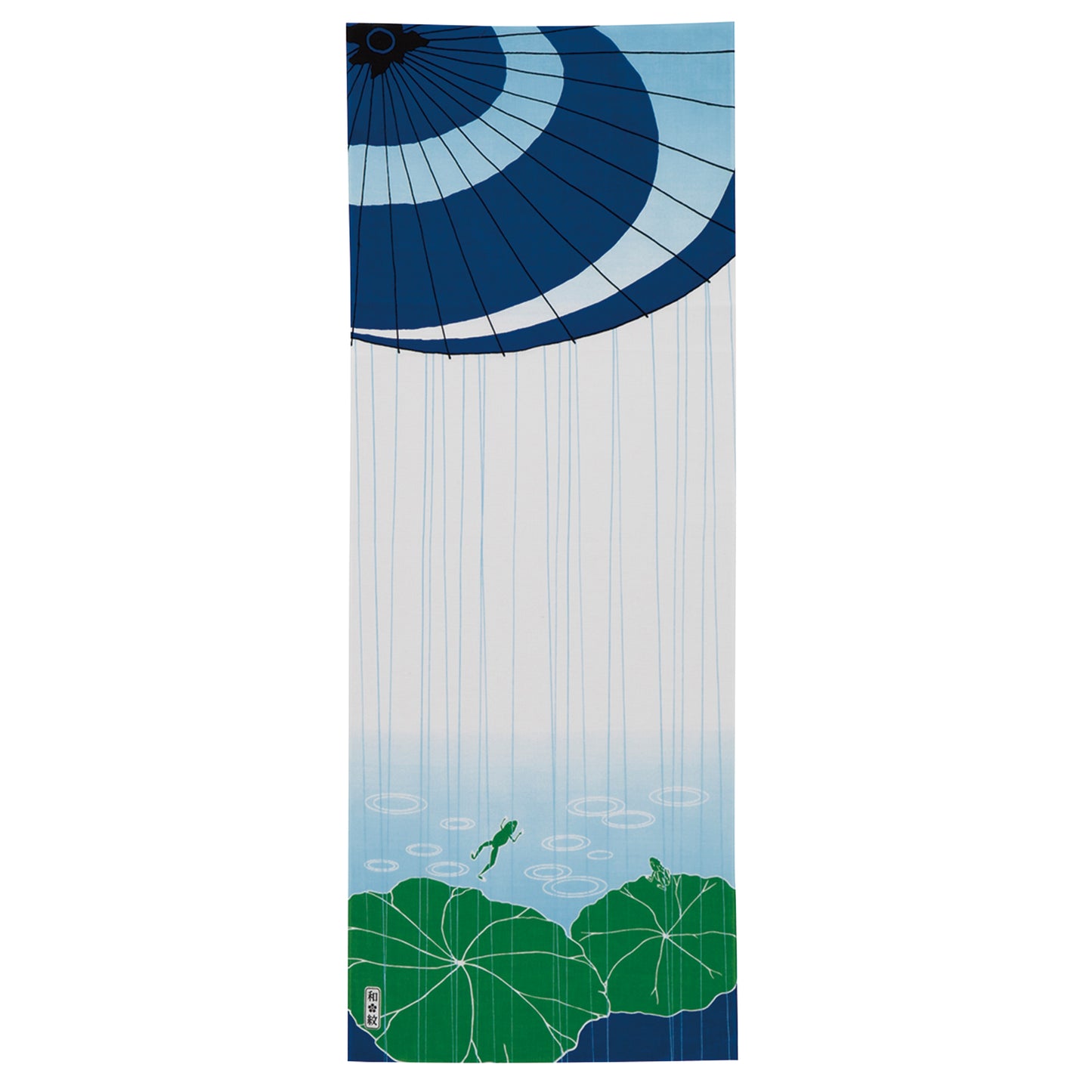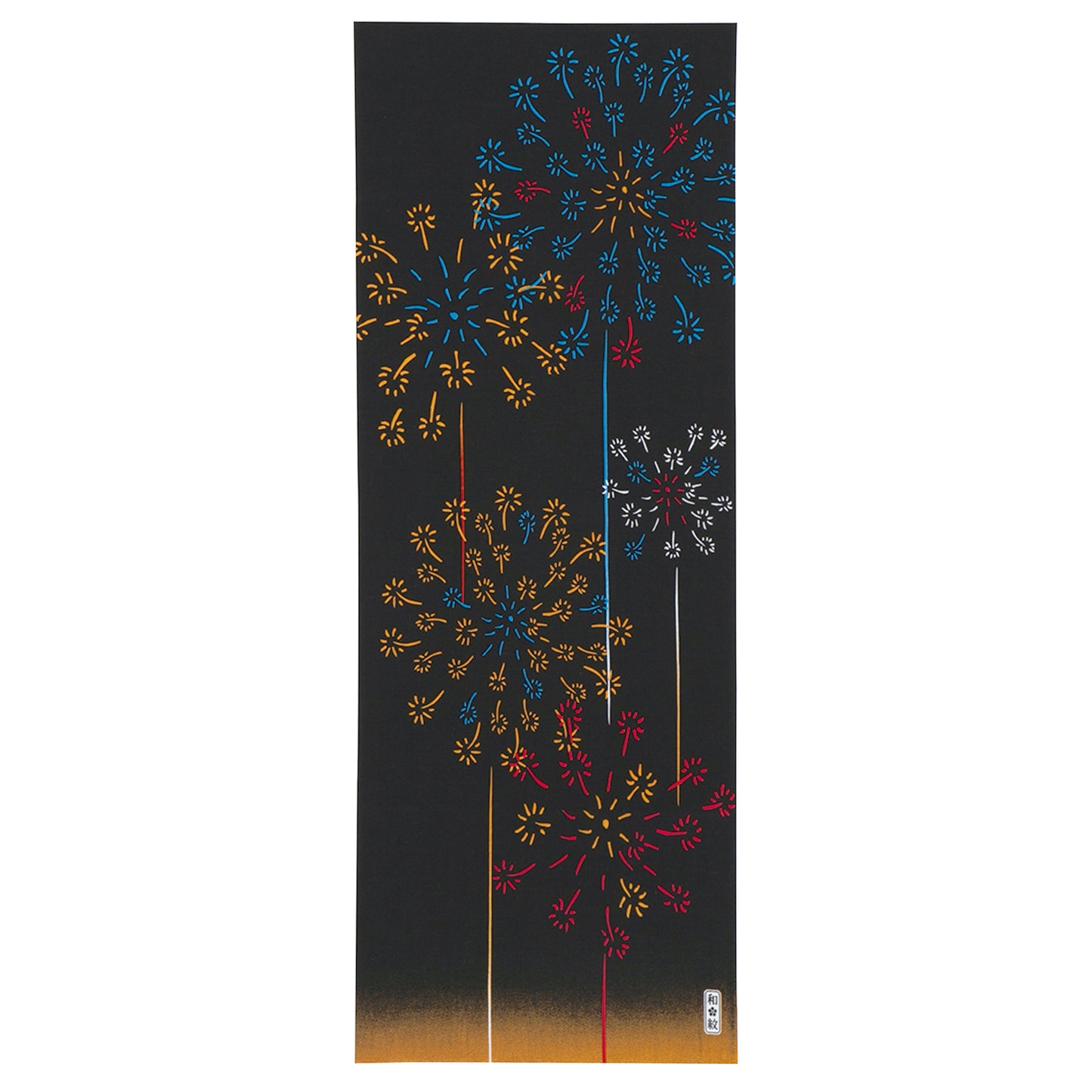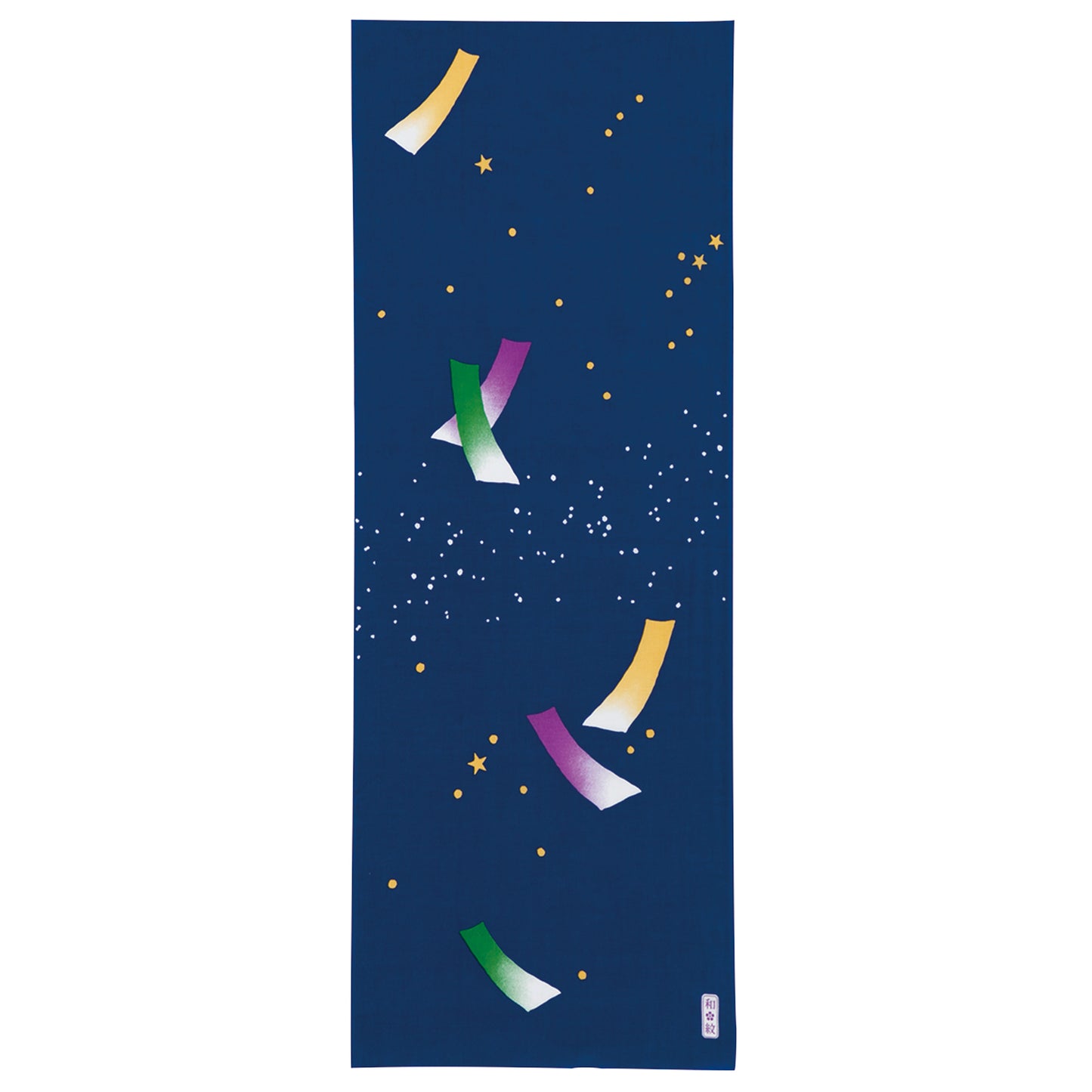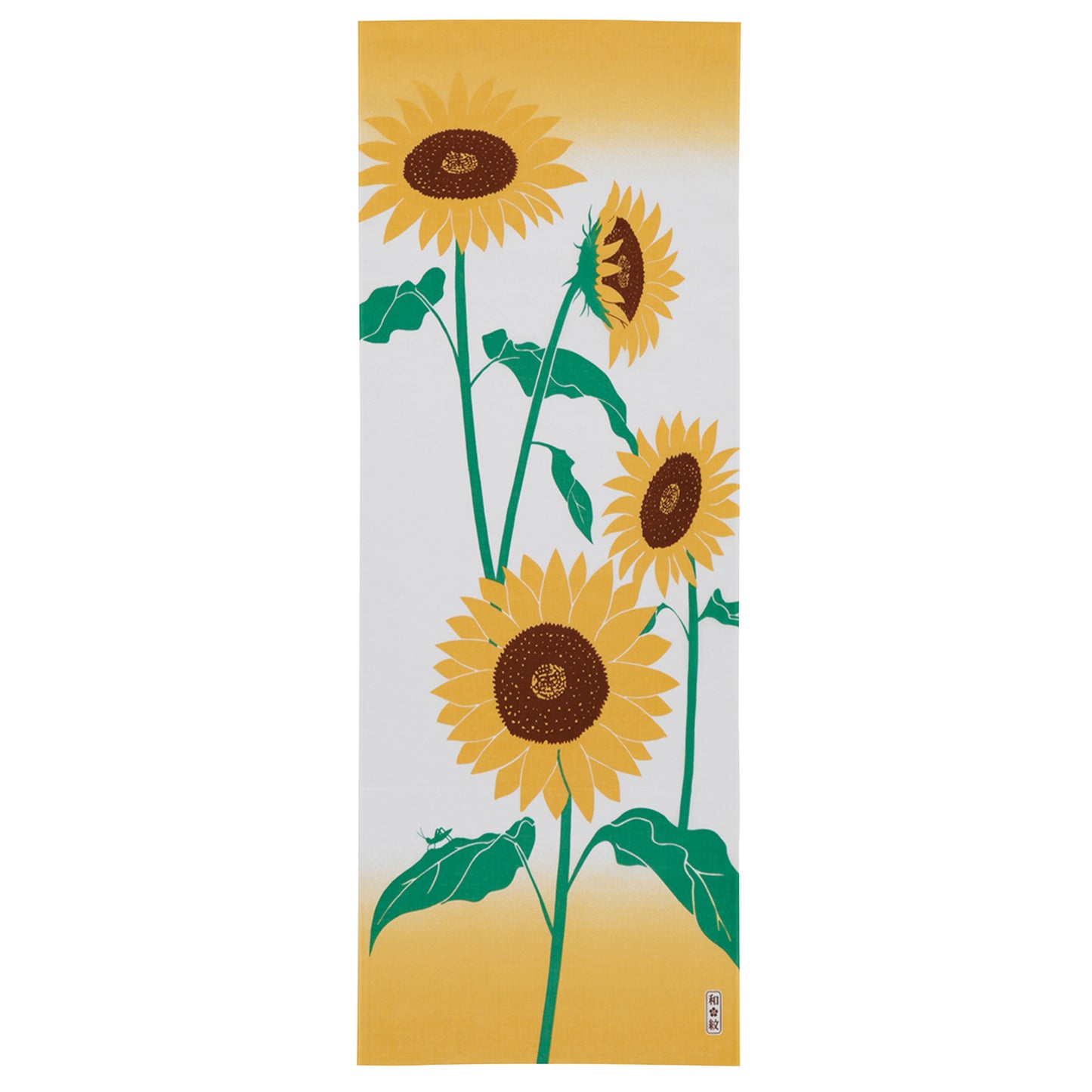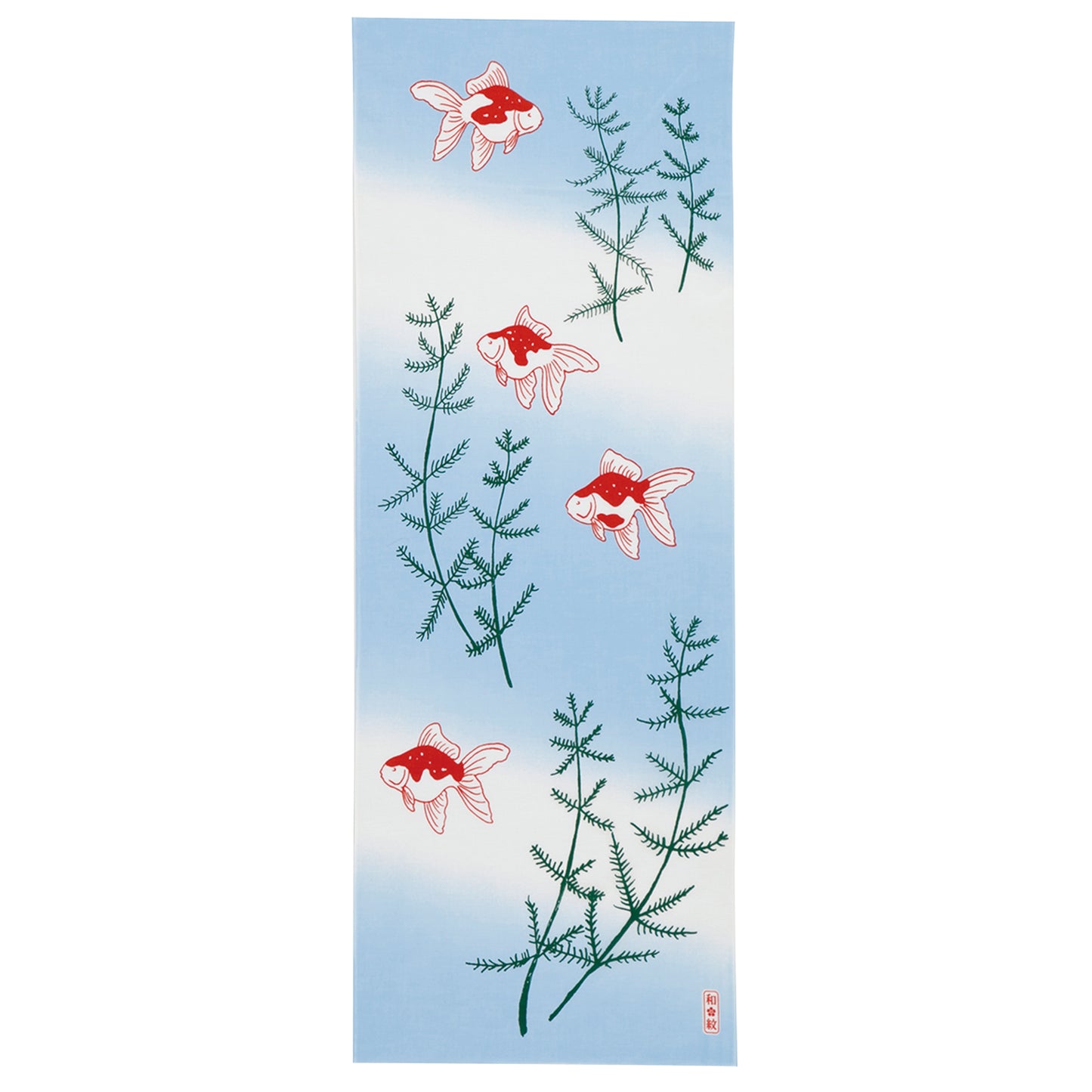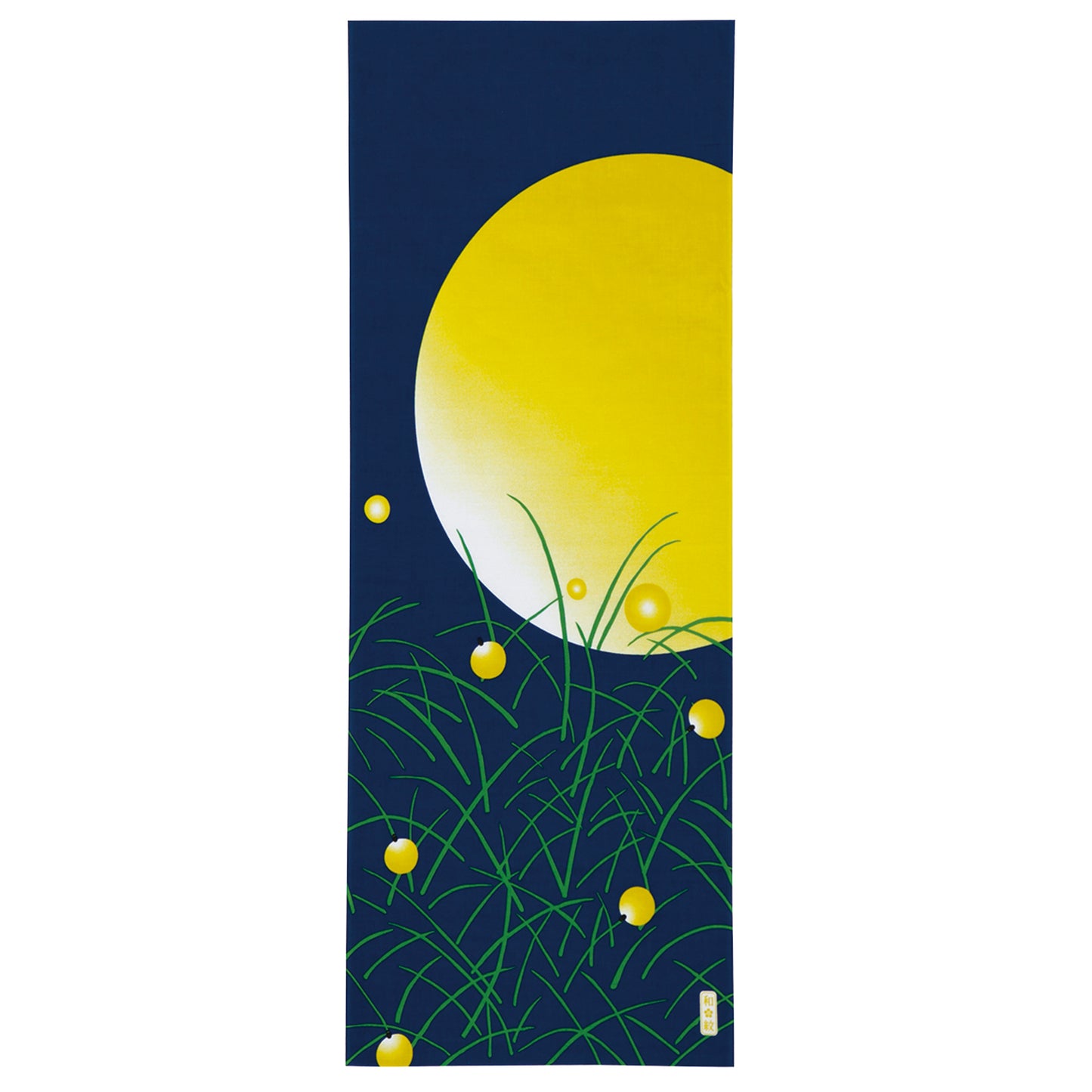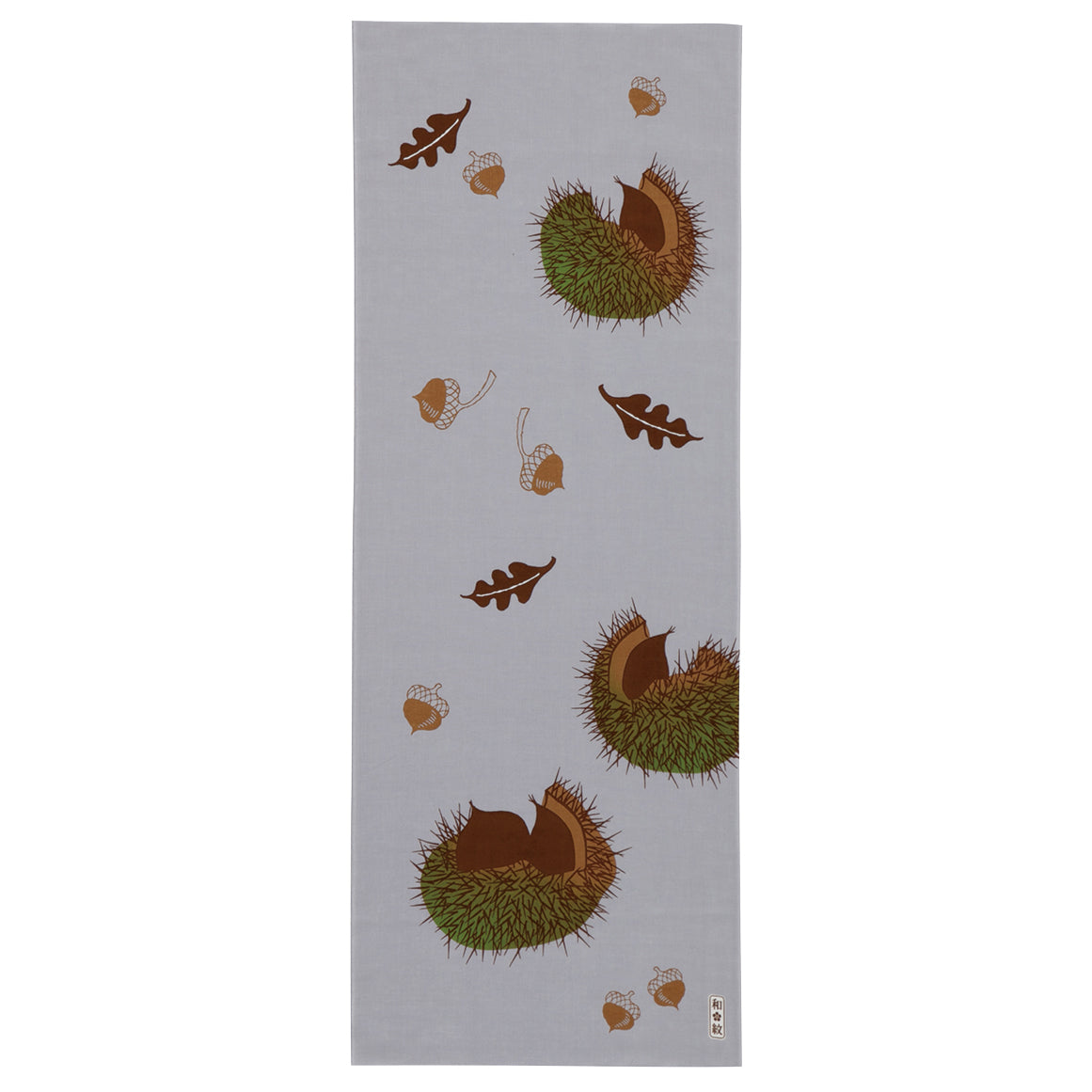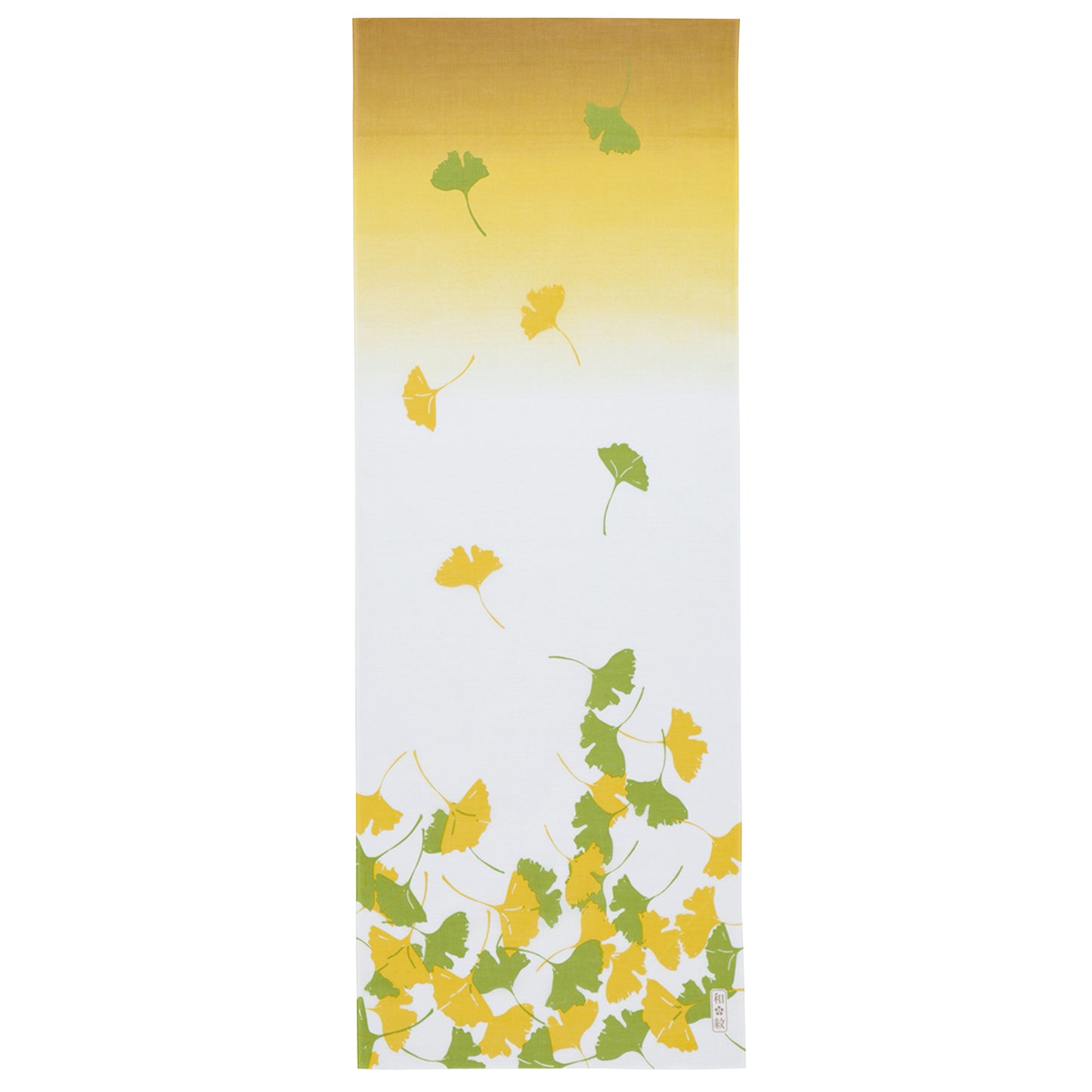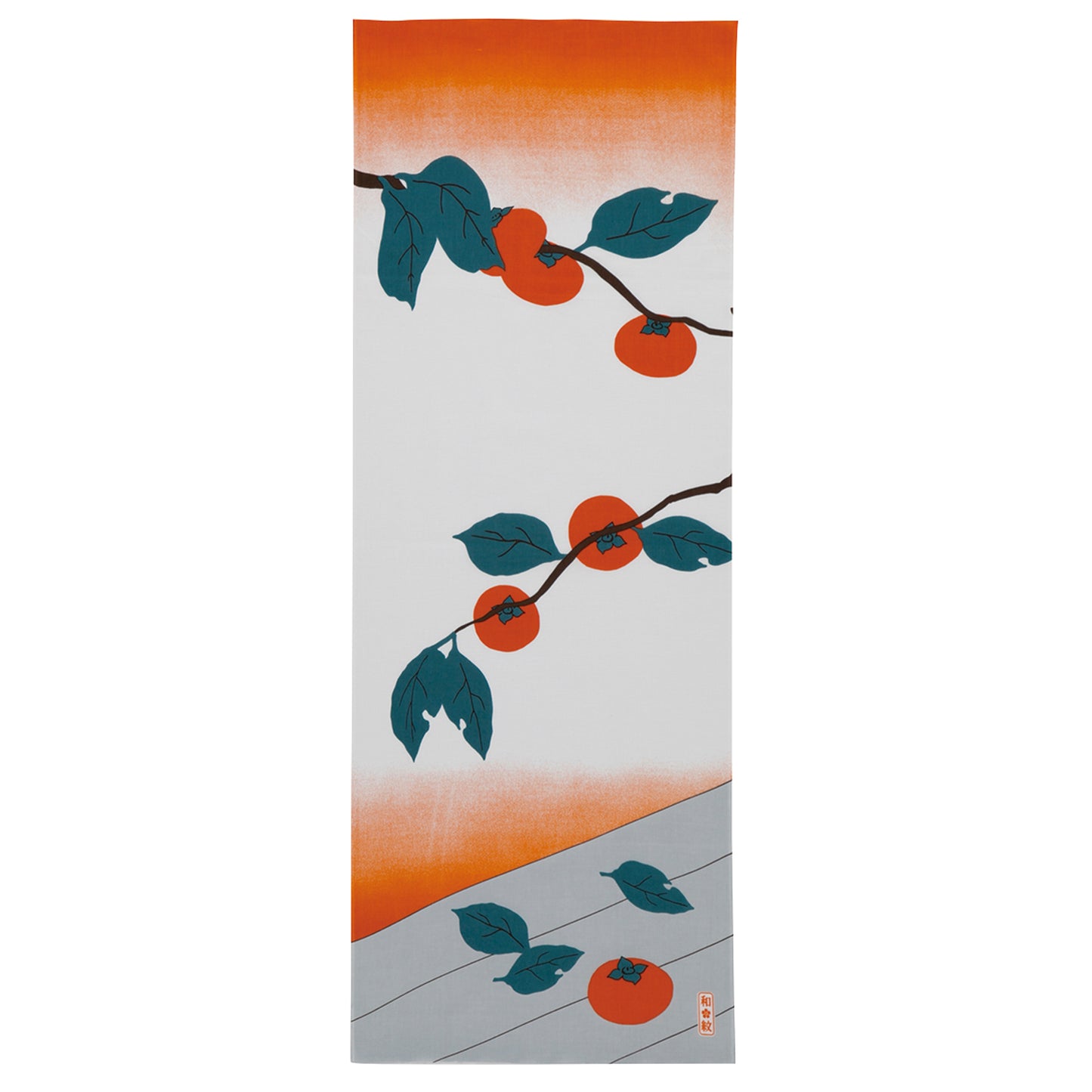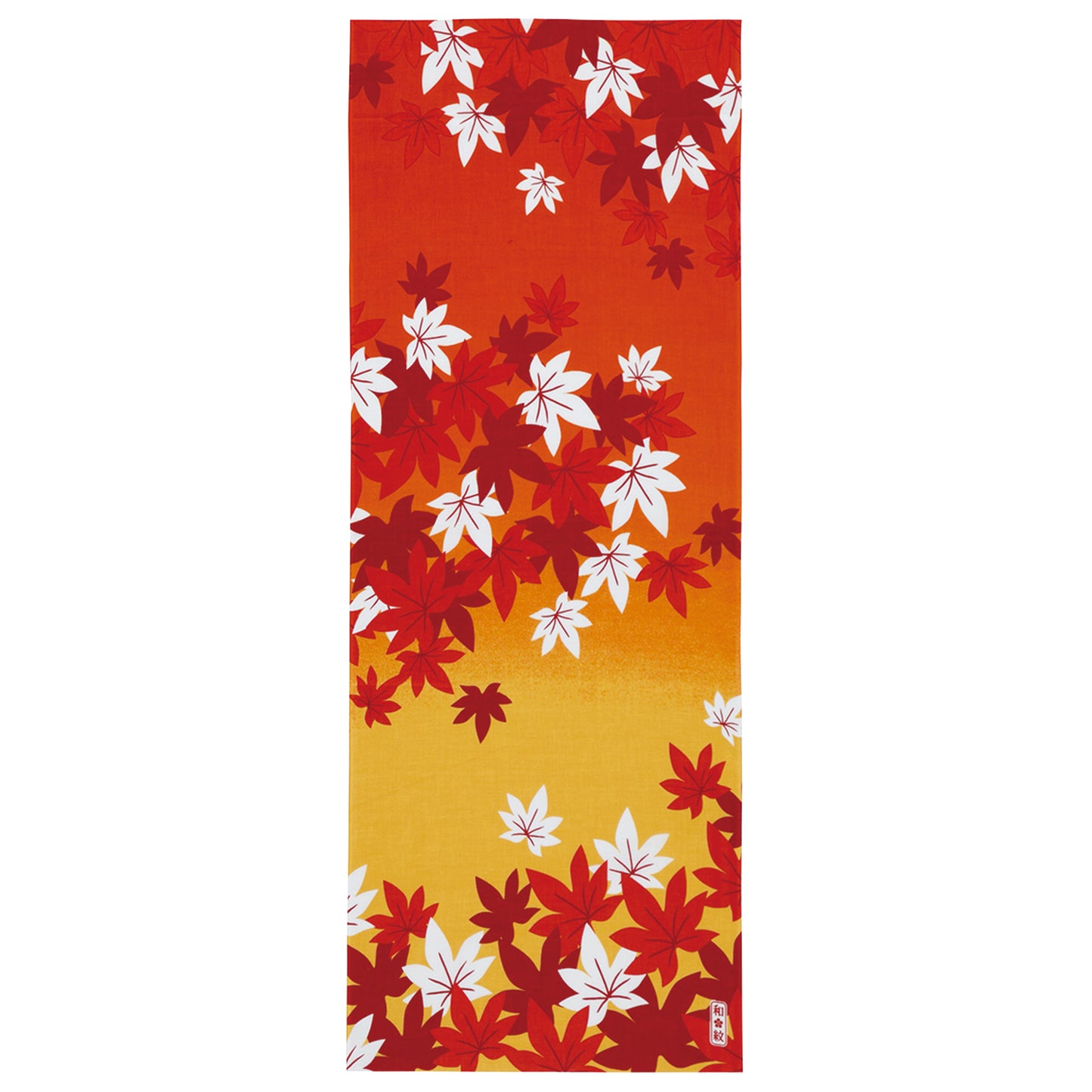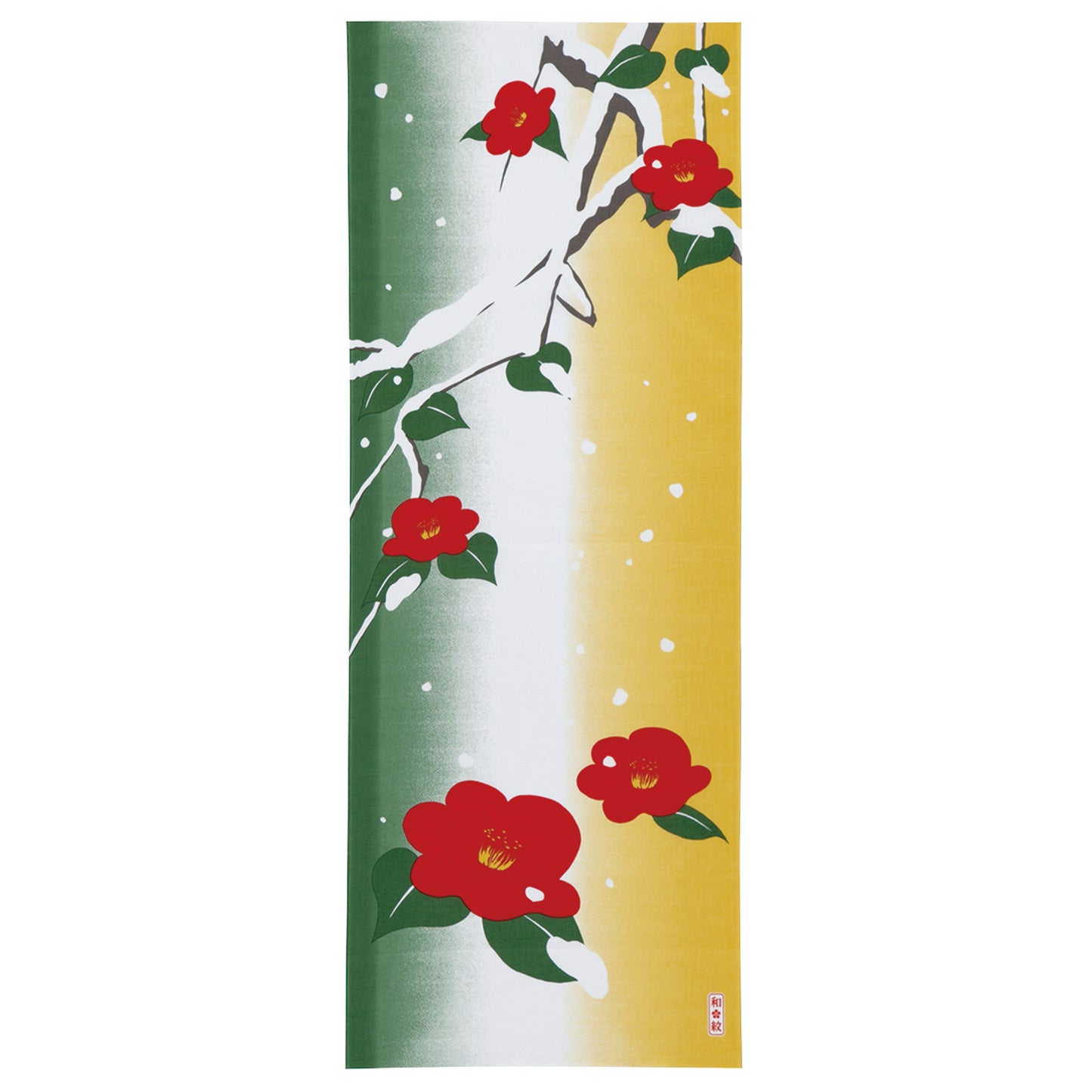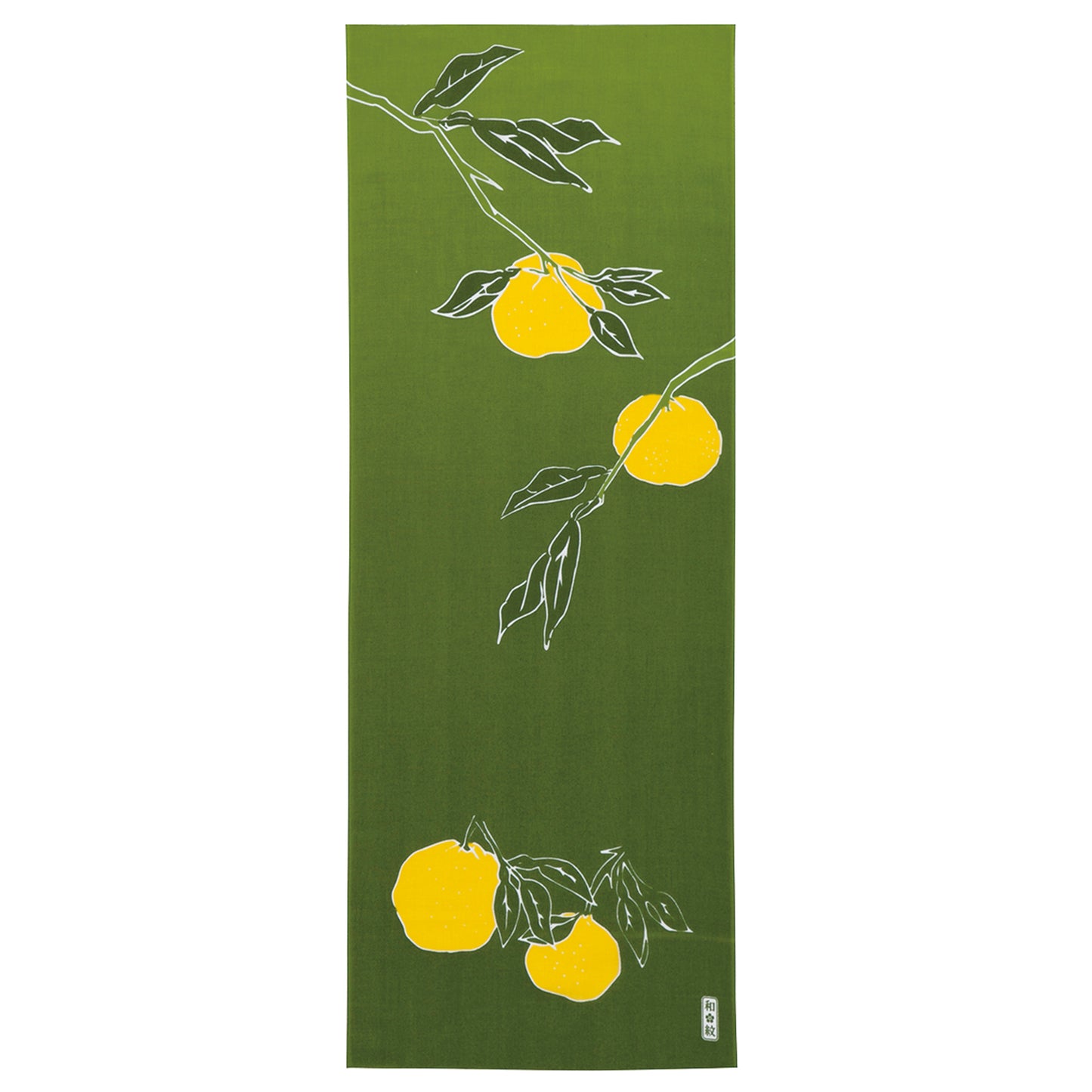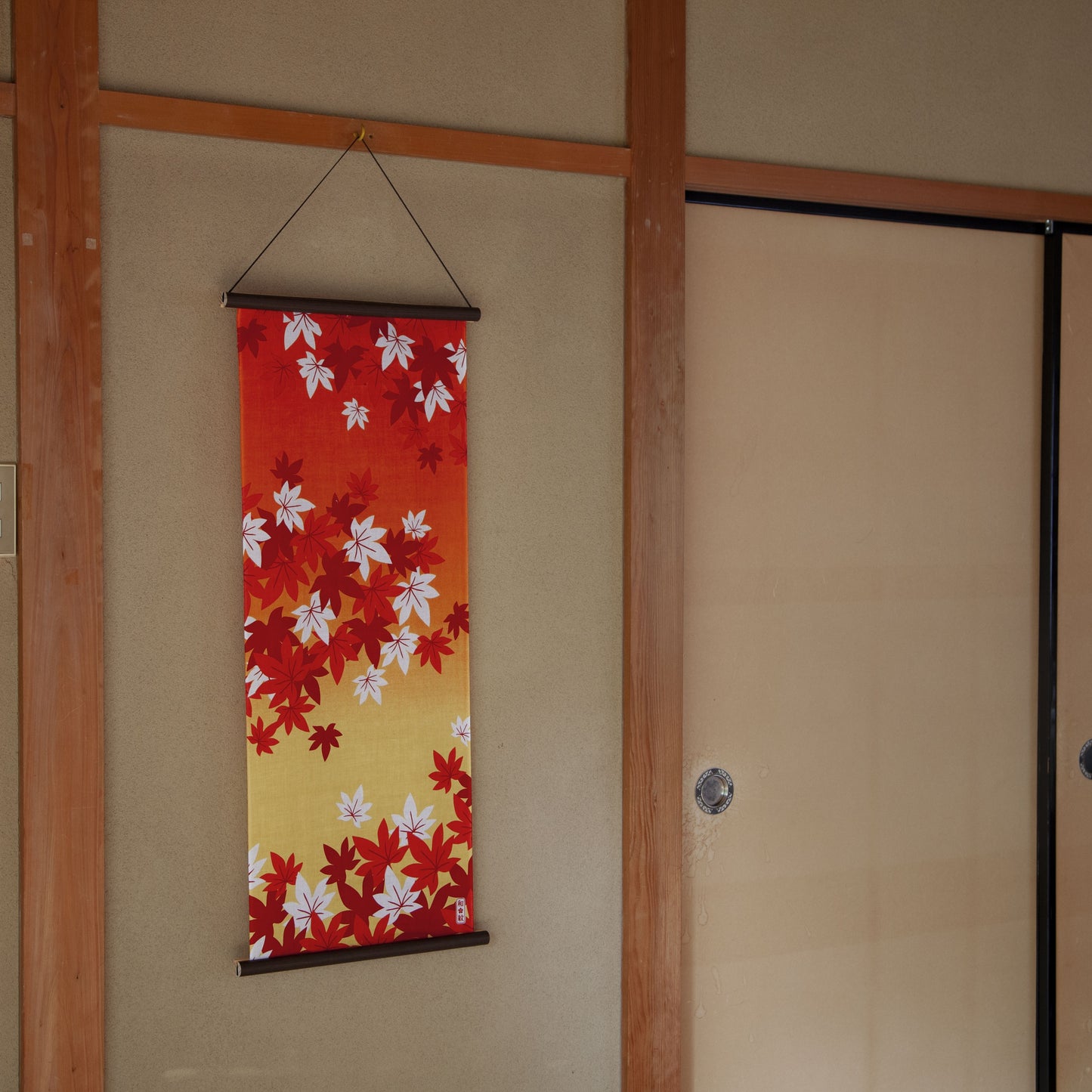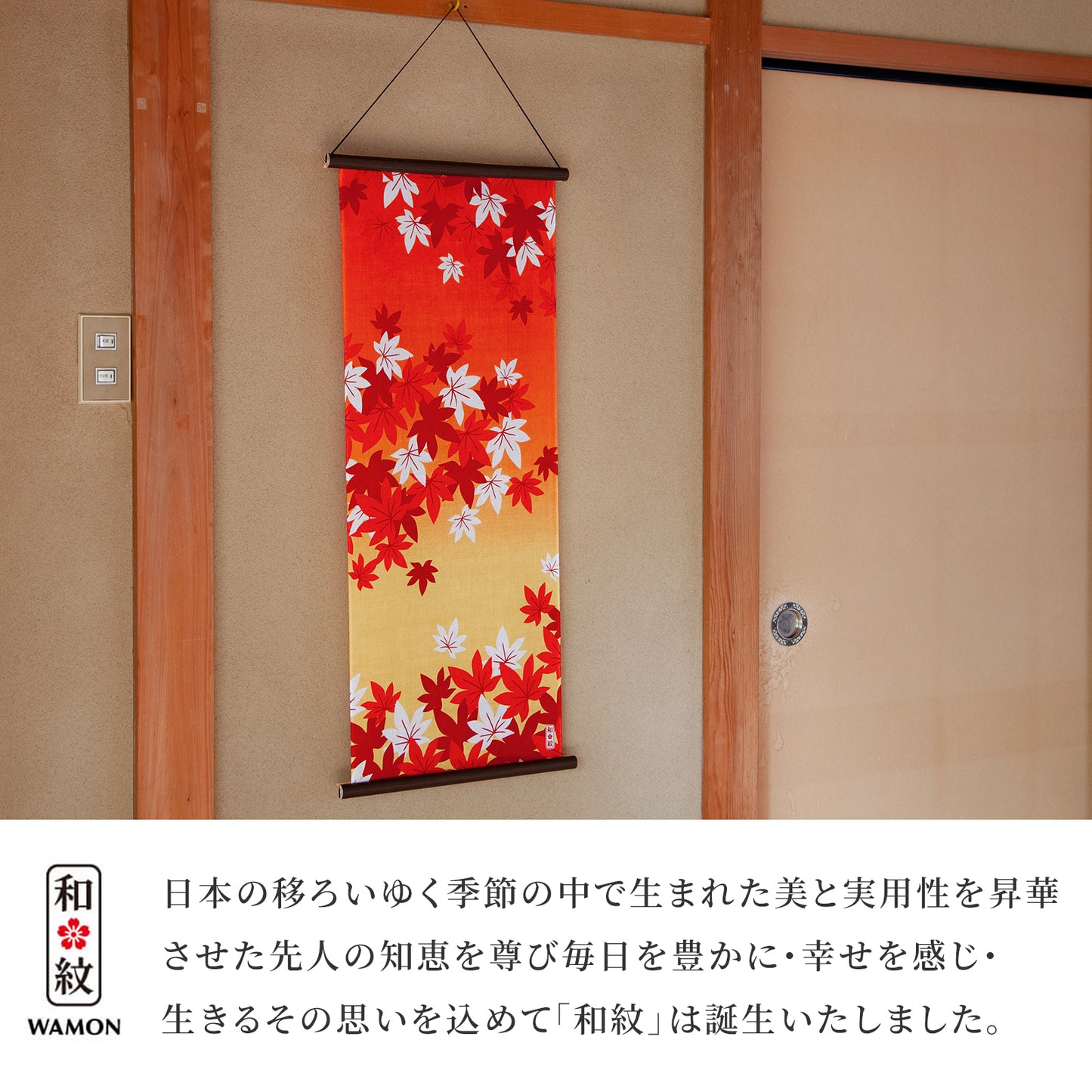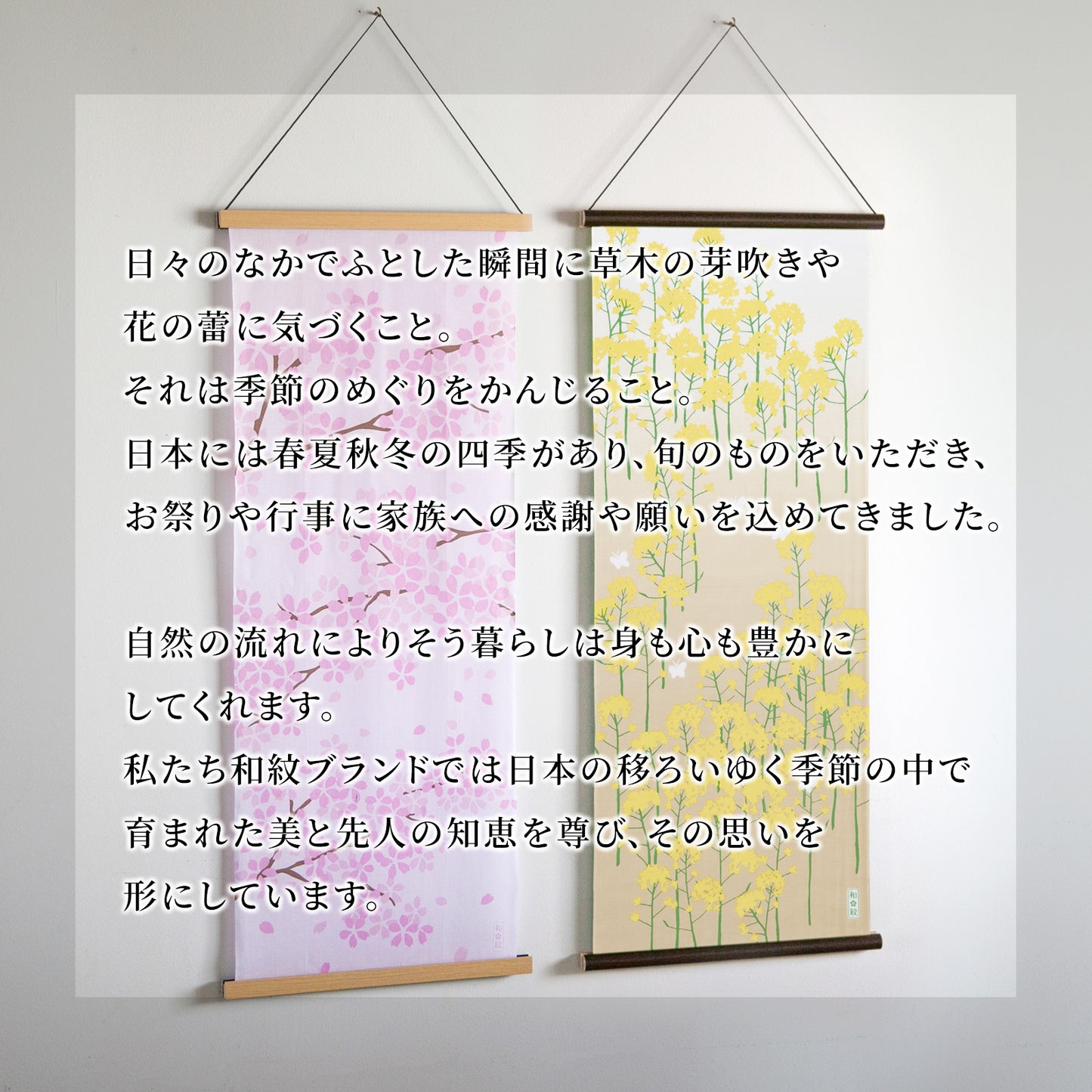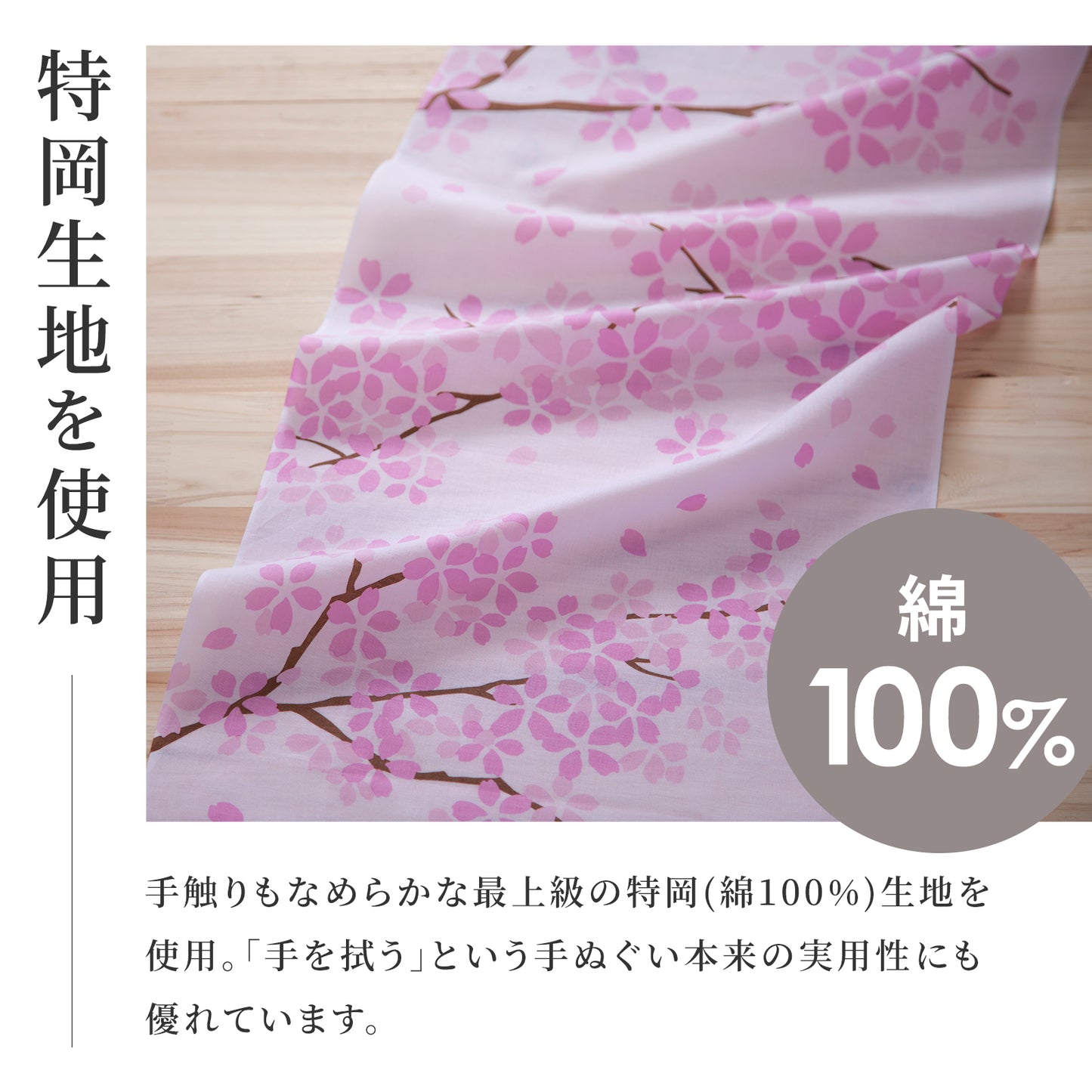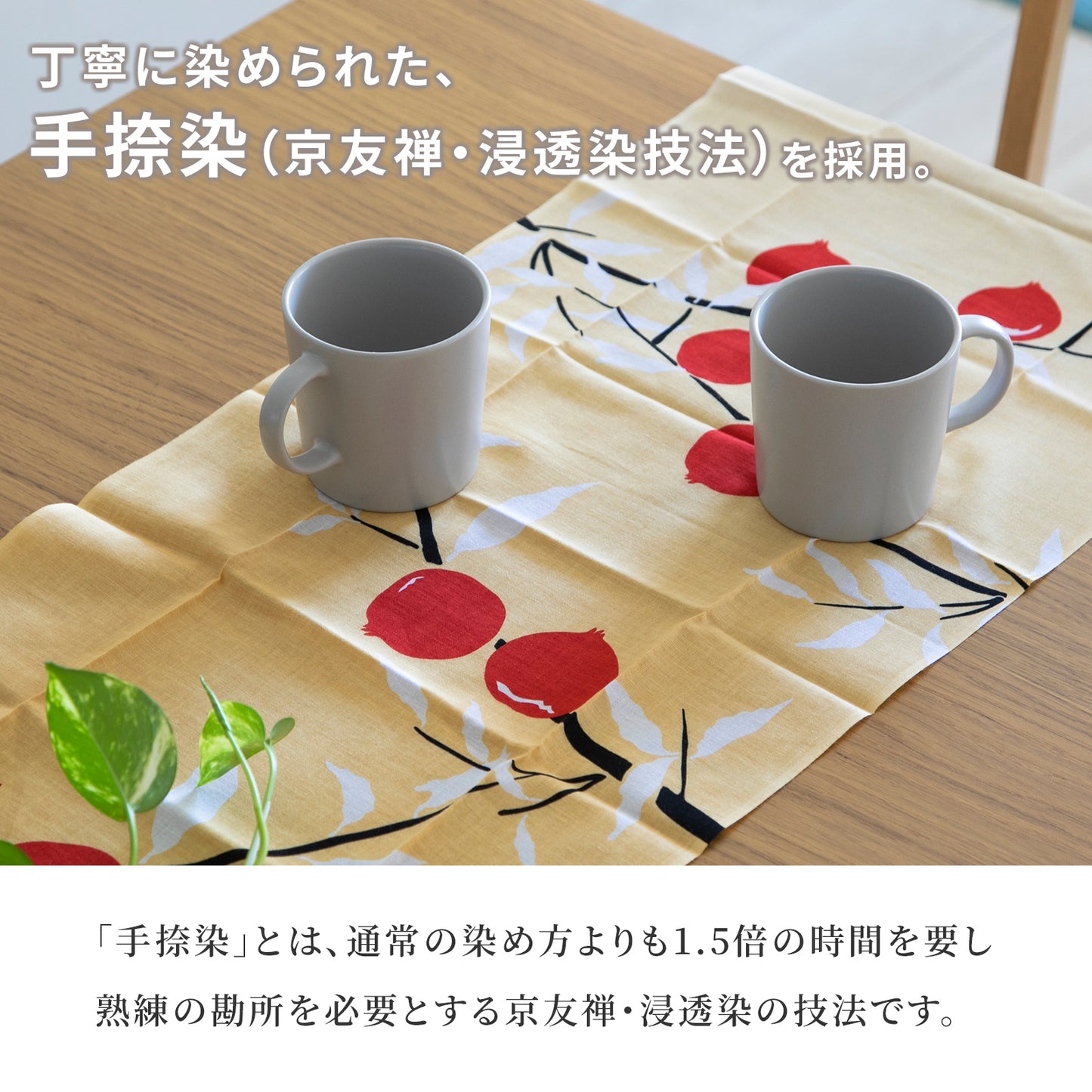I visited a dyeing factory in Kyoto that dyes Tenugui.
There are many other dye shops in Ukyo Ward, Kyoto City, where the dye factory is located.
It is said that dyeing has flourished since ancient times due to the high-quality underground water that springs up in this area.
You can feel the history that the blessings of the rich earth have nurtured industries and culture.


The photo shows the view of Arashiyama from the Katsura River.
The land is rich not only in resources but also in scenery.
"Tenassen" inheriting the technique of Kyo Yuzen

Ren's tenugui are dyed using a traditional dyeing method called 'Nassen', which is representative of Kyoto Yuzen.
There is also a technique called "Auto Screen Nassen" where the colors are layered by machine, but at Noren, we have our craftsmen dye by hand called "Tenassen".
Because it is handwork, it cannot be mass-produced, but it is dyed with complex patterns by skilled craftsmen.
Difference from Chusen tenugui

As with Nassen, there is another traditional dyeing technique called Chusen. When you think of tenugui, many people may think of a hand-dyed tenugui.
"Chusen" is named after making a bank with glue for resist dyeing the part not to be dyed, and pouring dye into the part to be dyed with a tool like a watering can.
Unlike Nassen, in which the fabric is stretched out and dyed one by one, in Chusen, the fabric is layered and dyed all at once. For this reason, tenugui are characterized by being dyed so evenly that the front and back cannot be seen.
Since the dyes are also different, the textures such as "bleeding" and "blurring" are unique to Chusen.
On the other hand, it is not suitable for expressing thin lines and fine patterns, or for patterns that use multiple colors, as it requires creating a bank. It also has the characteristic that the color is easy to fade.
Nassen makes it easy to express even fine patterns, and colors can be layered as many times as the number of plates.
It is characterized by being able to keep vivid colors compared to Chusen.
Penetration dyeing that combines delicacy and warmth
Ren's tenugui are dyed using a special technique called "permeation dyeing".
In the case of Nassen, the surface is dyed firmly, but the back is not evenly dyed due to the method of rubbing and dyeing and the use of dye mixed with paste.
Penetration dyeing can be dyed to the back by creating an interval where the dye slowly permeates the fabric. By thoroughly penetrating the fabric, the color will have depth and a deep taste.


In addition to the expression of delicate patterns and vivid colors that are characteristic of Nassen, we have achieved a warm and deep dyeing like Chusen.
Gradation expression that overturns the common sense of textile printing
In addition, Ren's scenery tenugui incorporates gradation into the design to express the change and lingering effects of the seasons.
In general, it is said that it is difficult to reproduce gradation in textile printing, but the amount of dye is adjusted by squeezing the mesh part of the paper pattern, and gradation is realized with skilled craftsmanship.


This is also a challenging technique that is rarely seen in conventional Nassen hand towels.
I am truly humbled by all the craftsmen who have made it happen.
This is getting a little long, so I'll stop here for now.
Next time, we will follow the process with videos.
